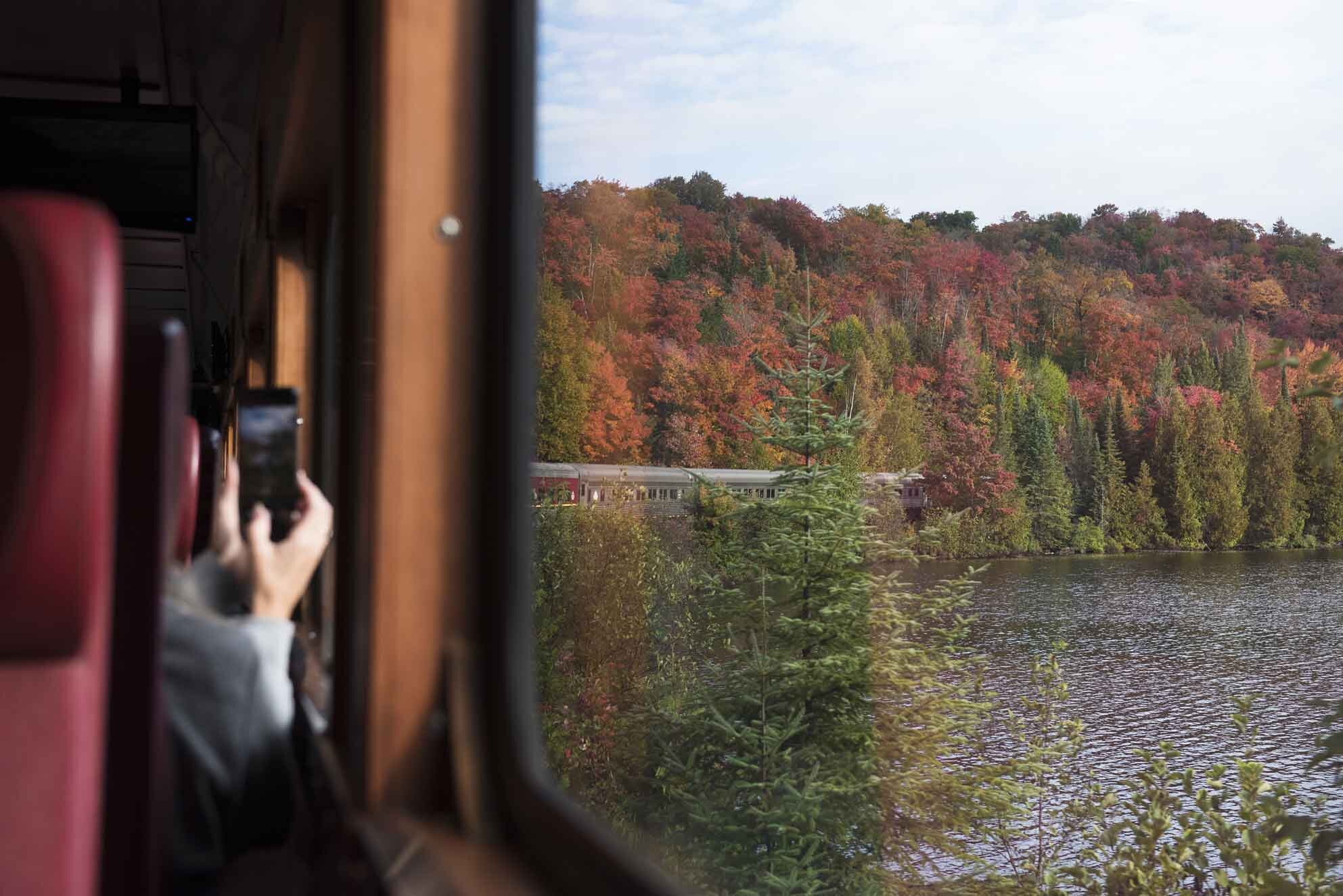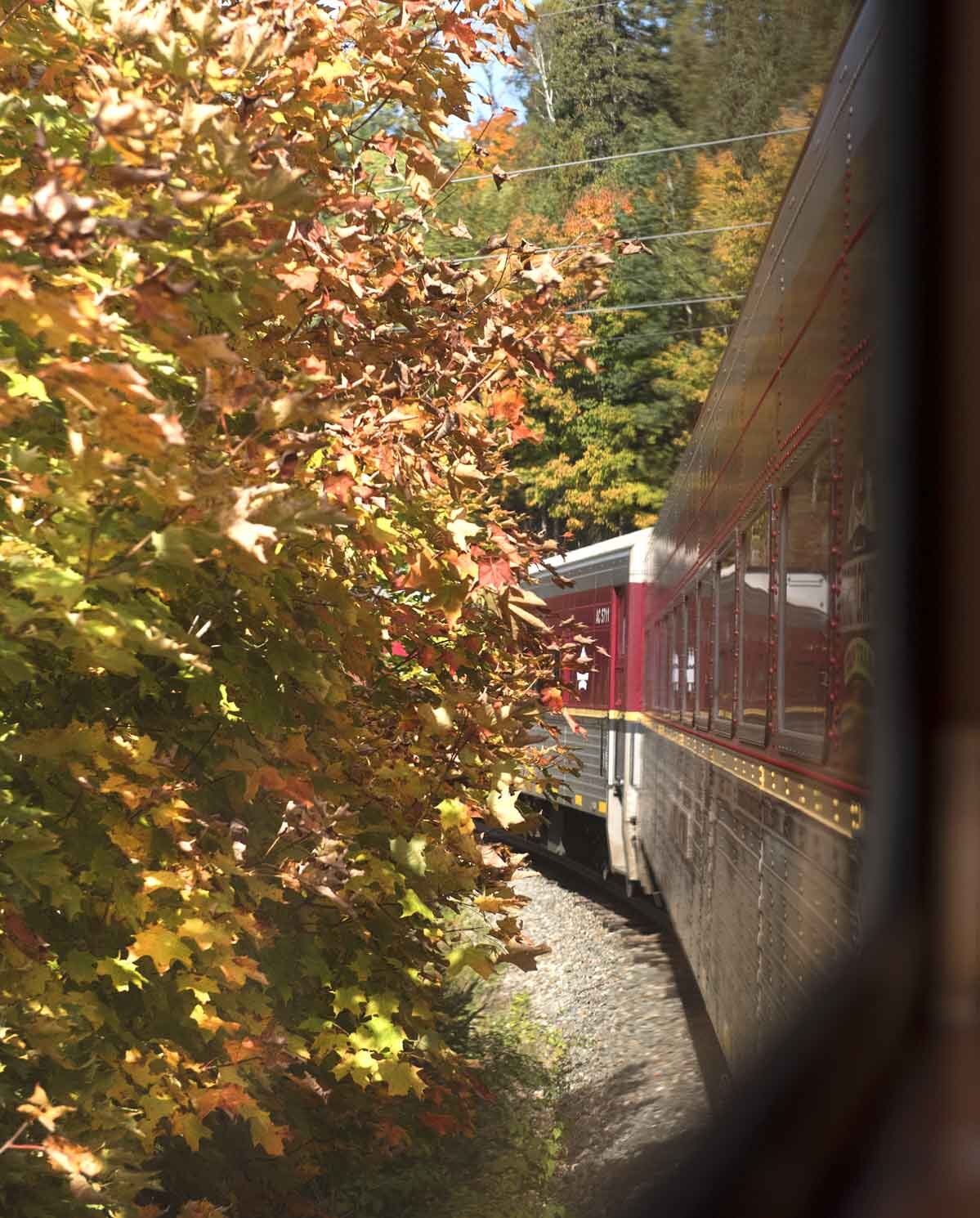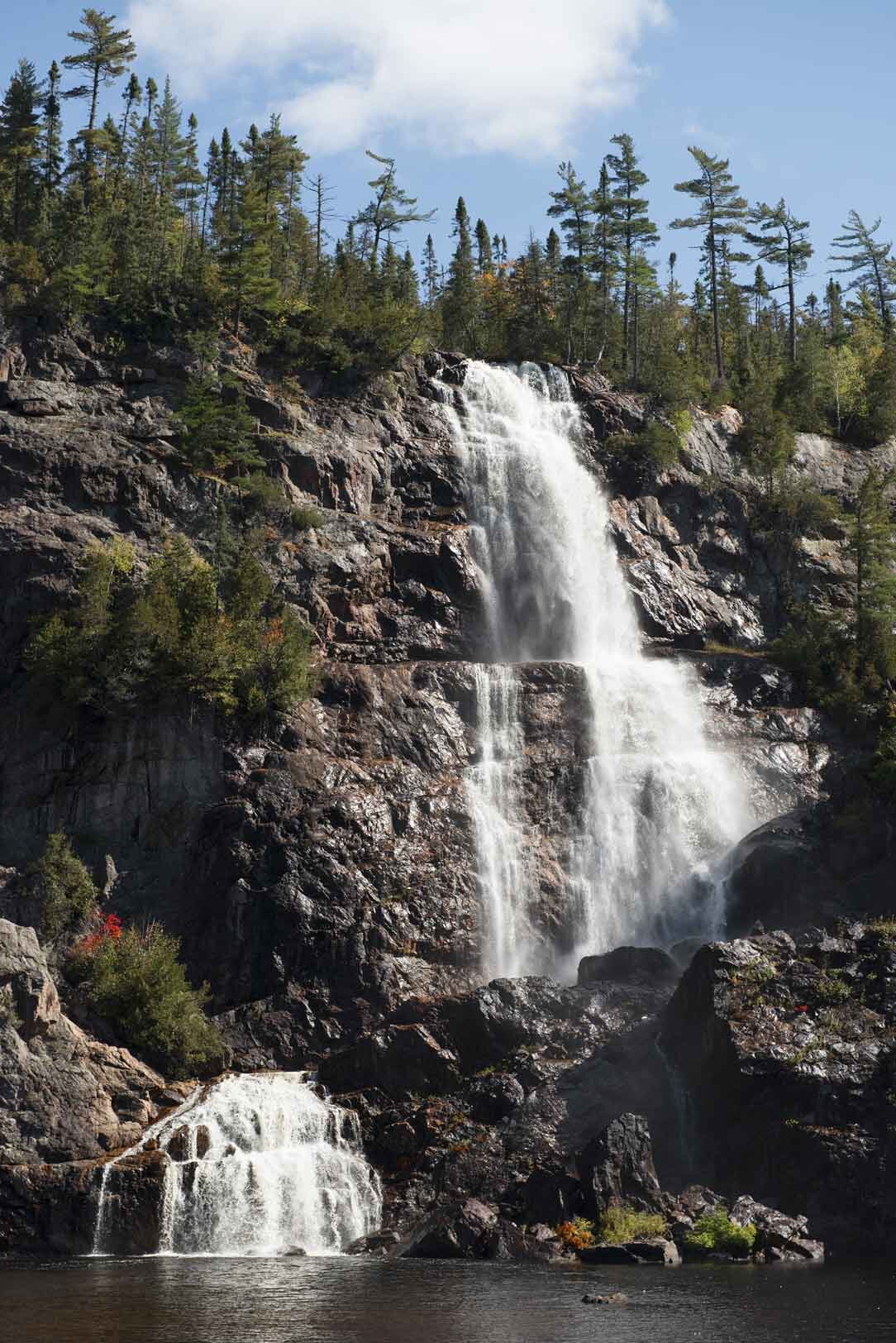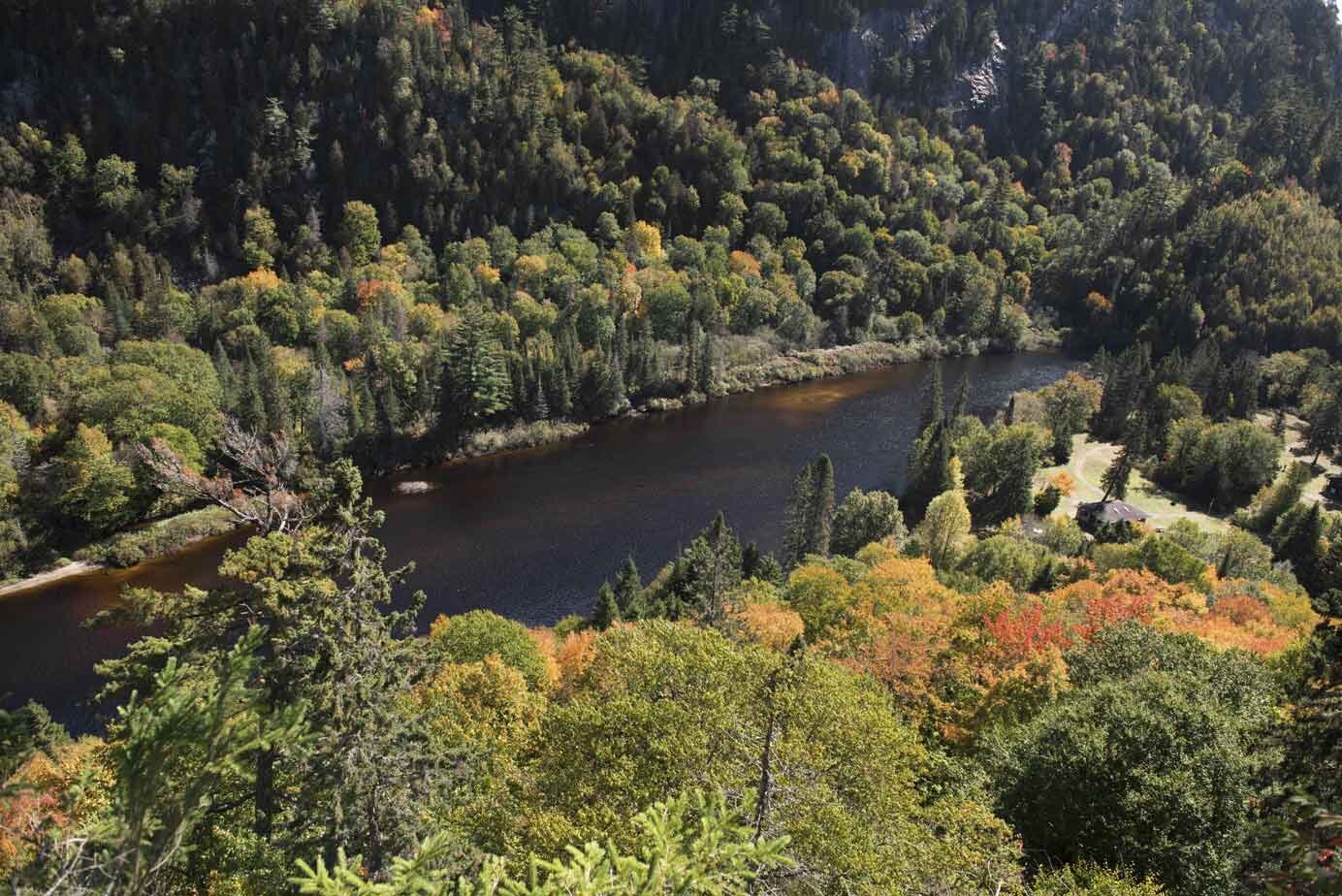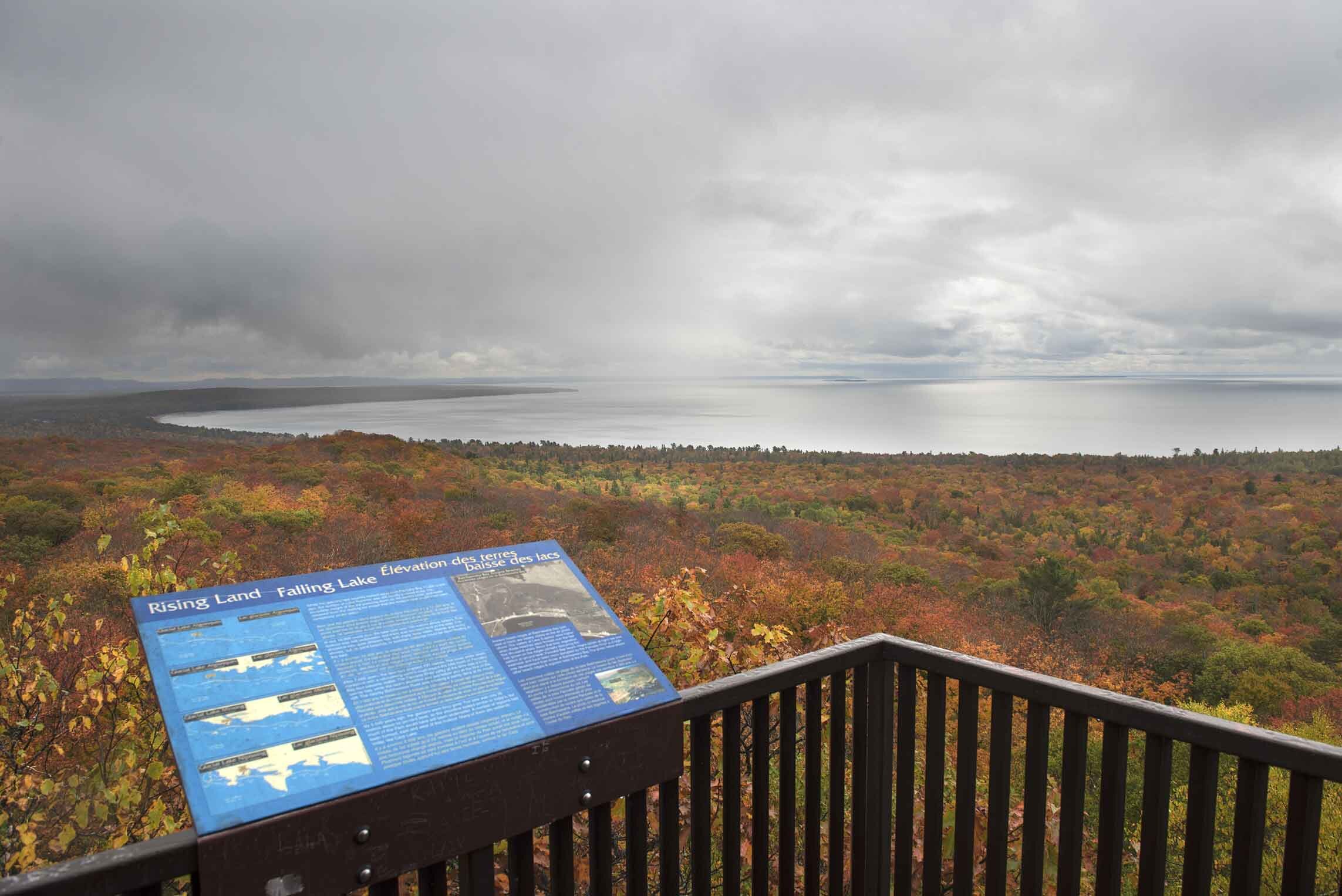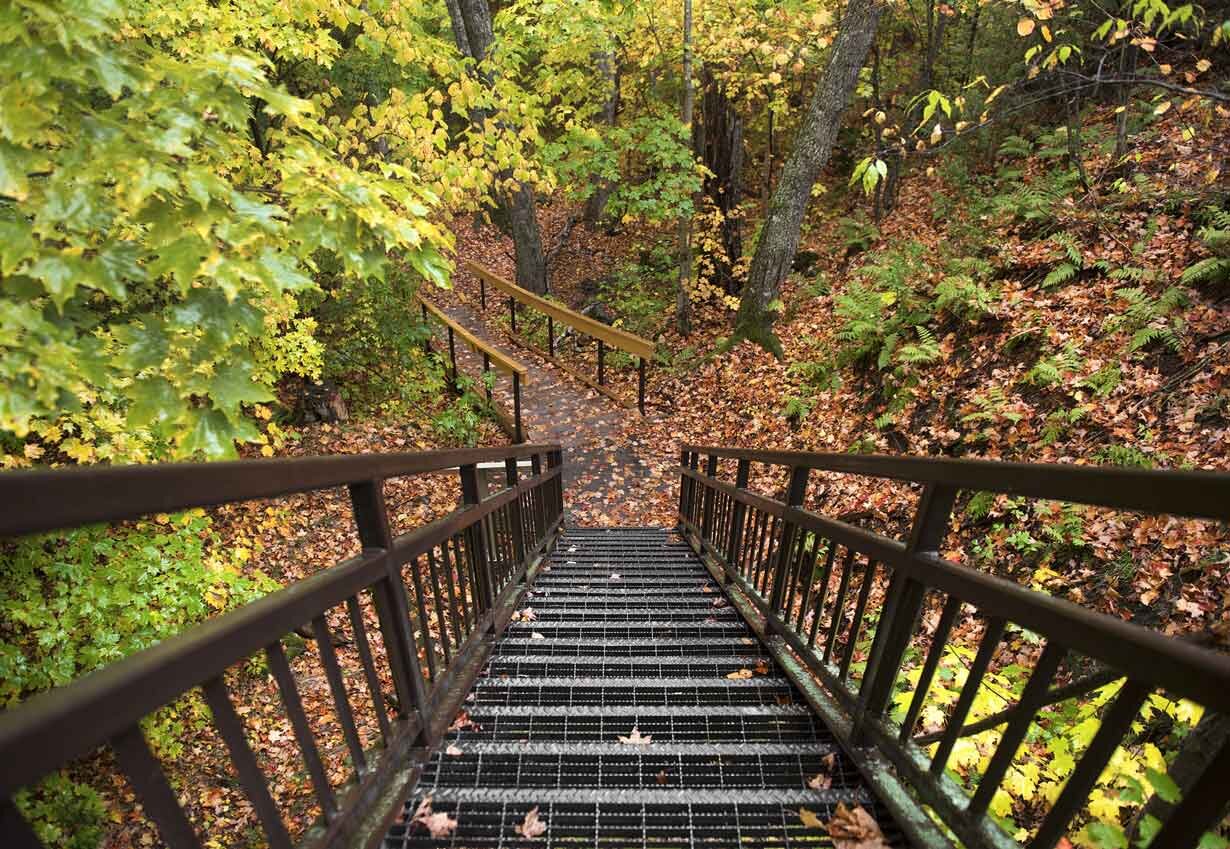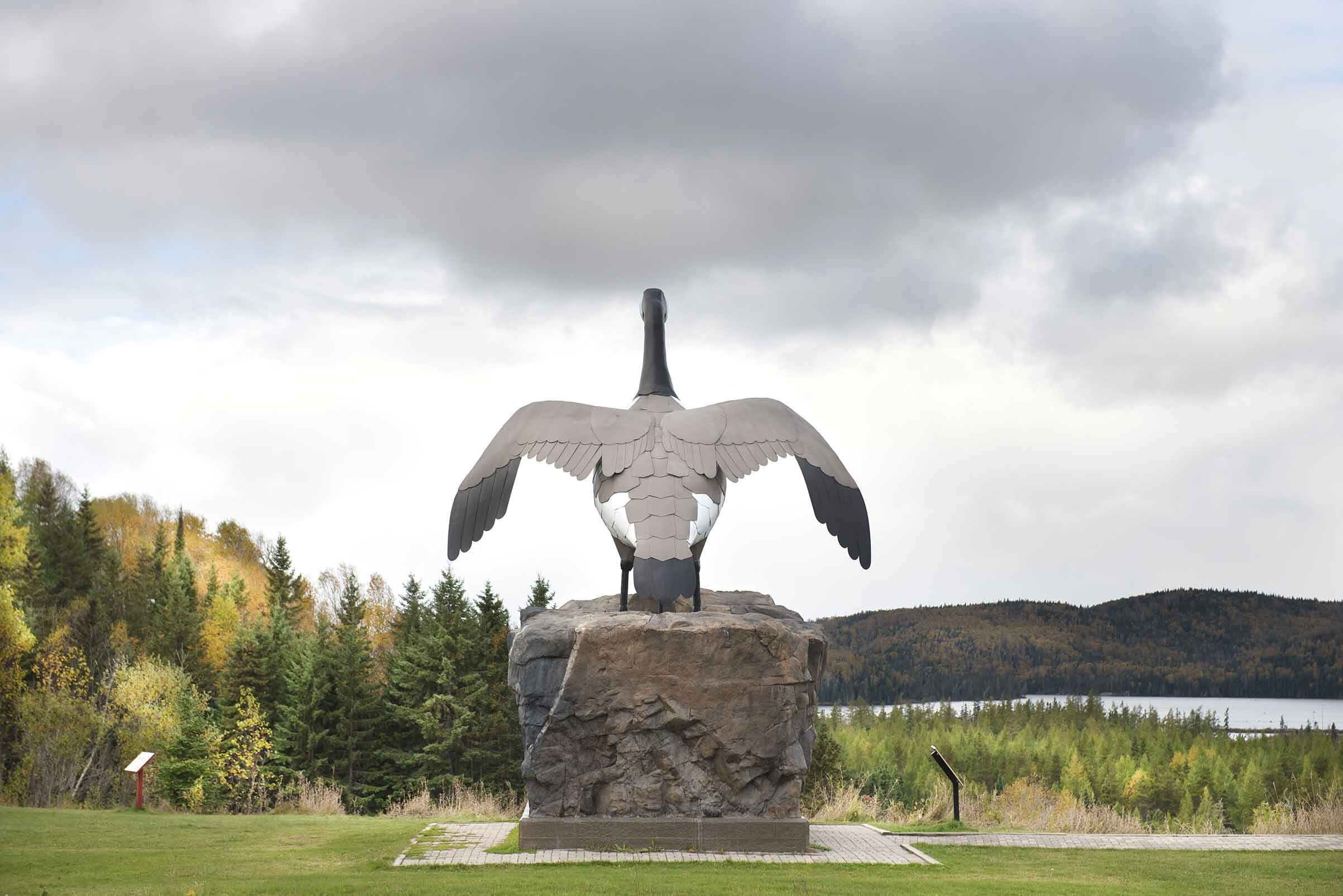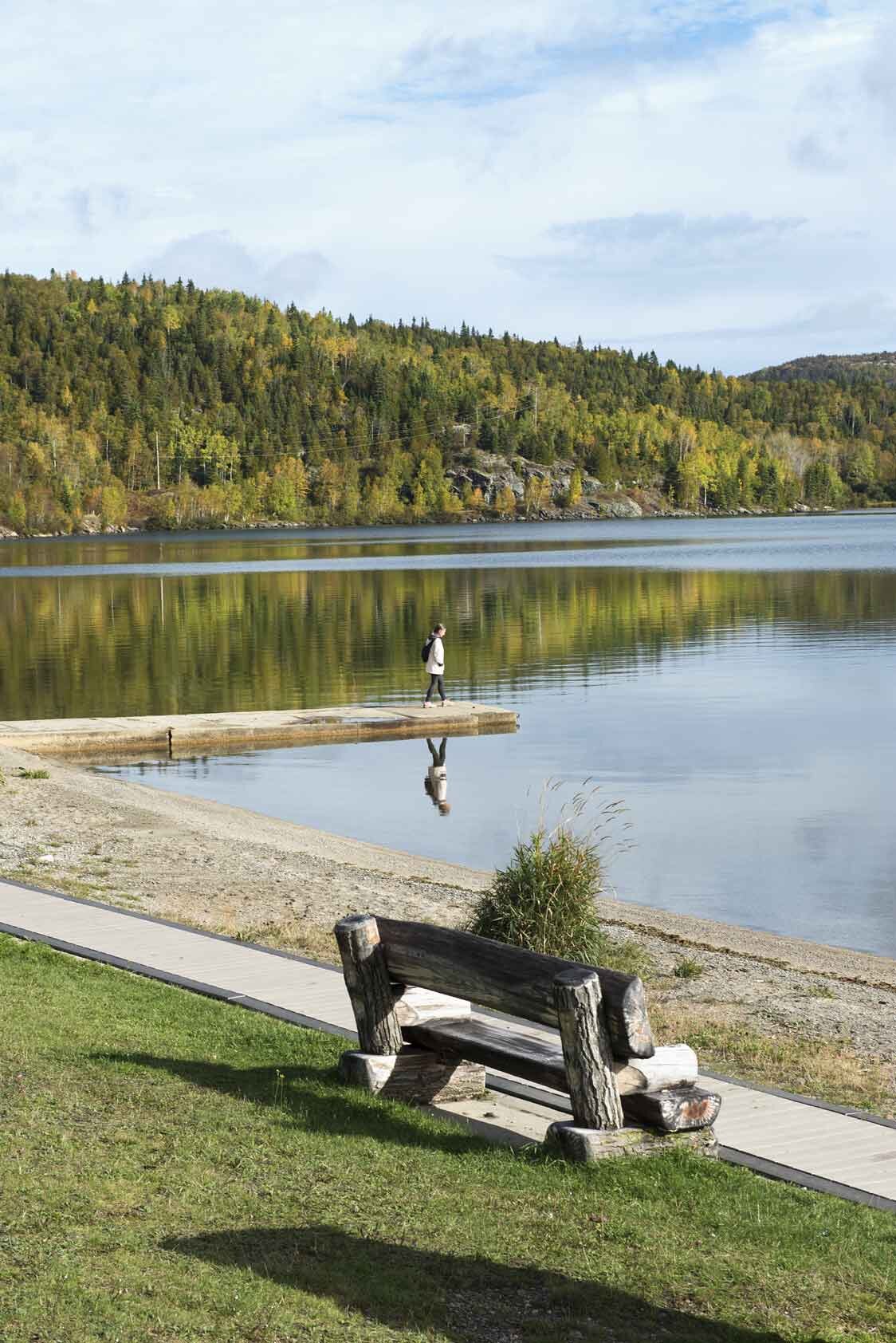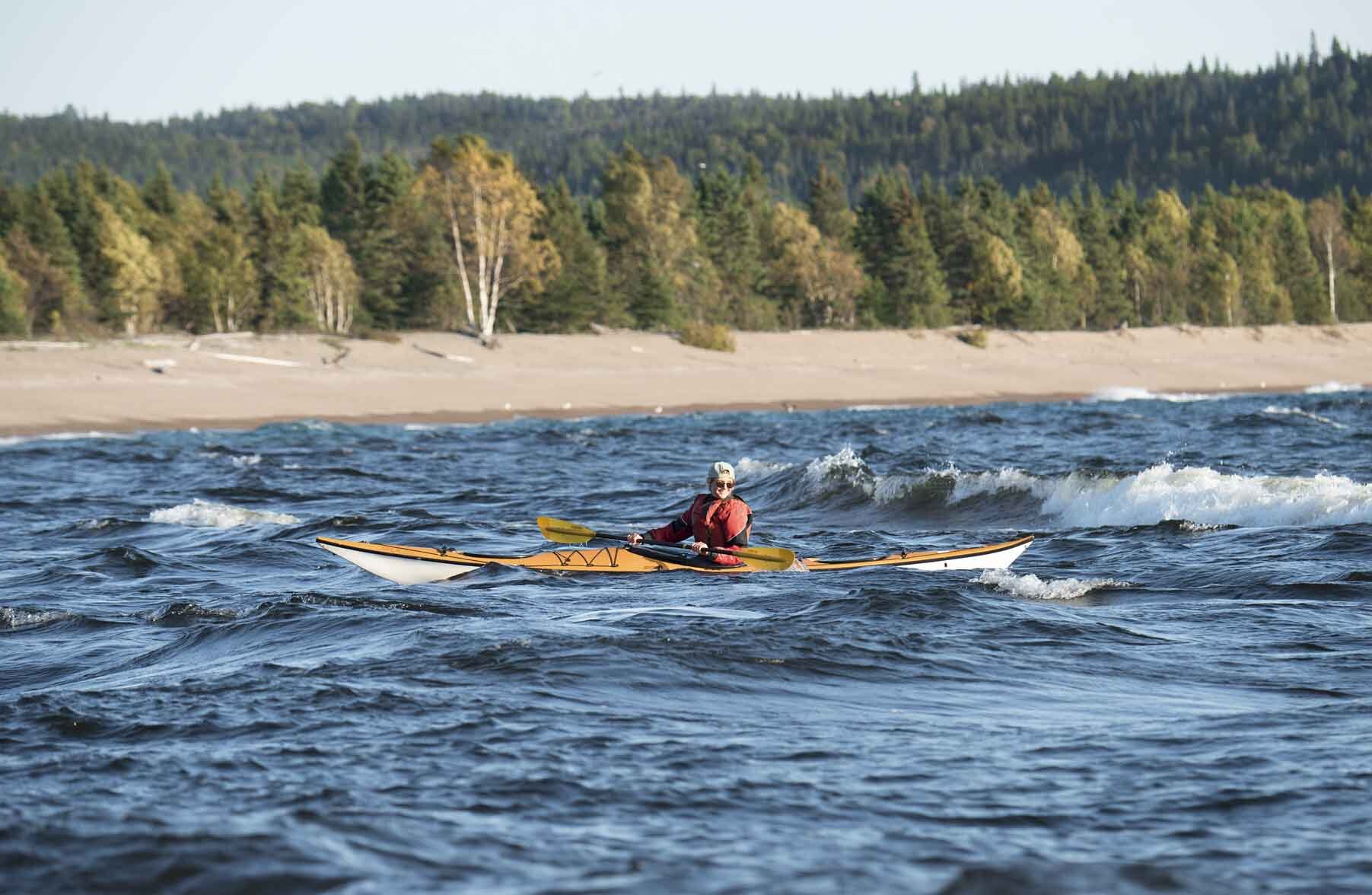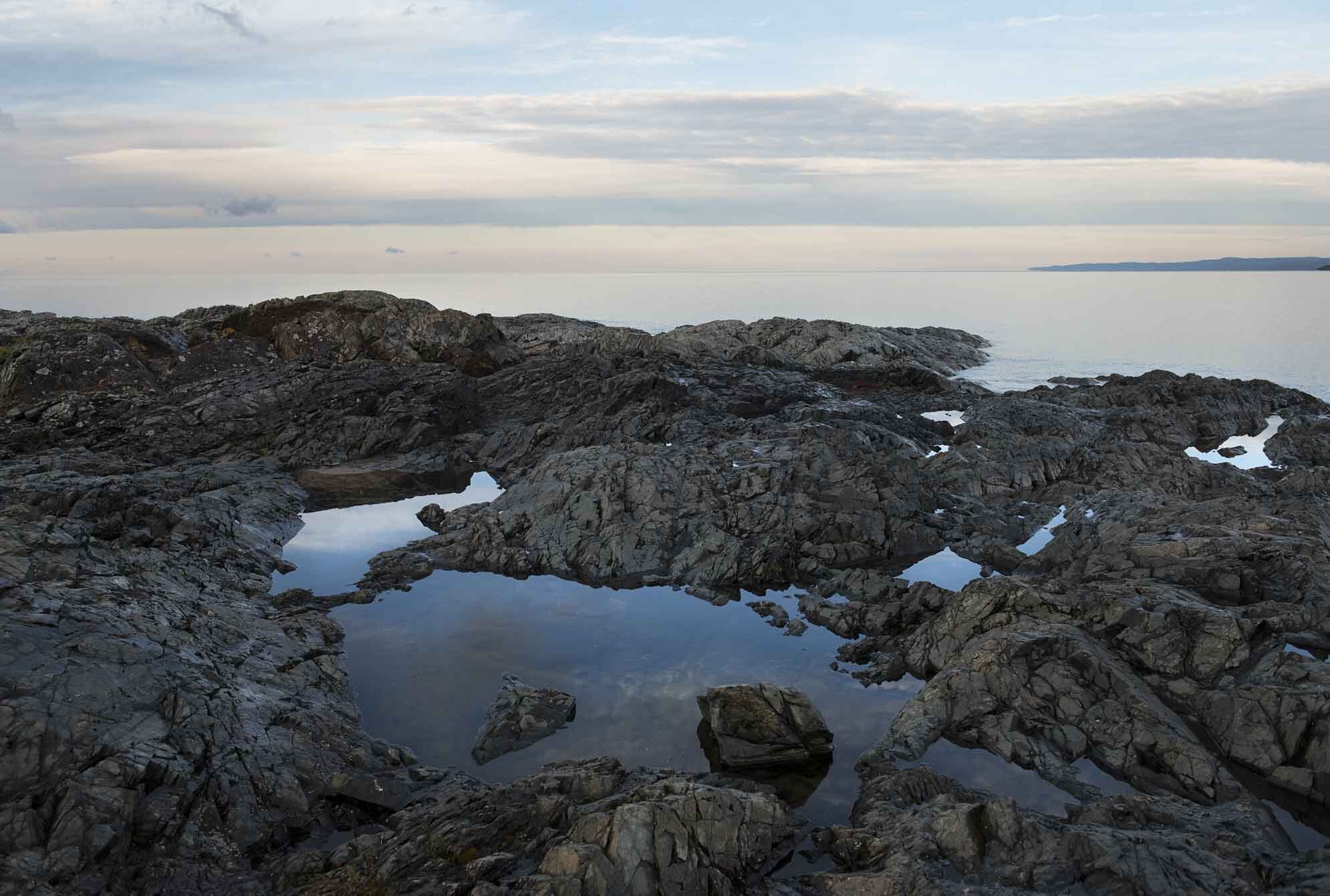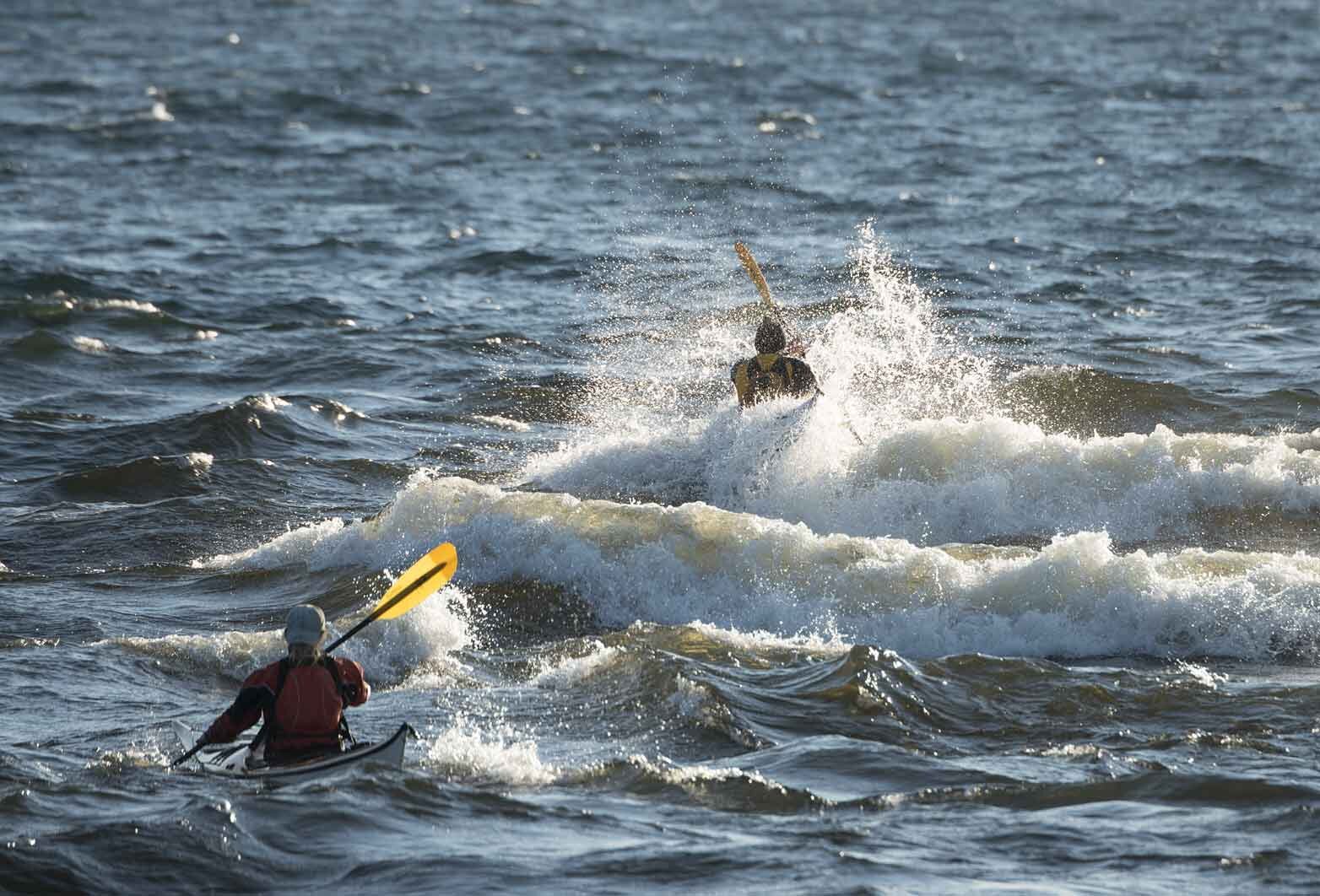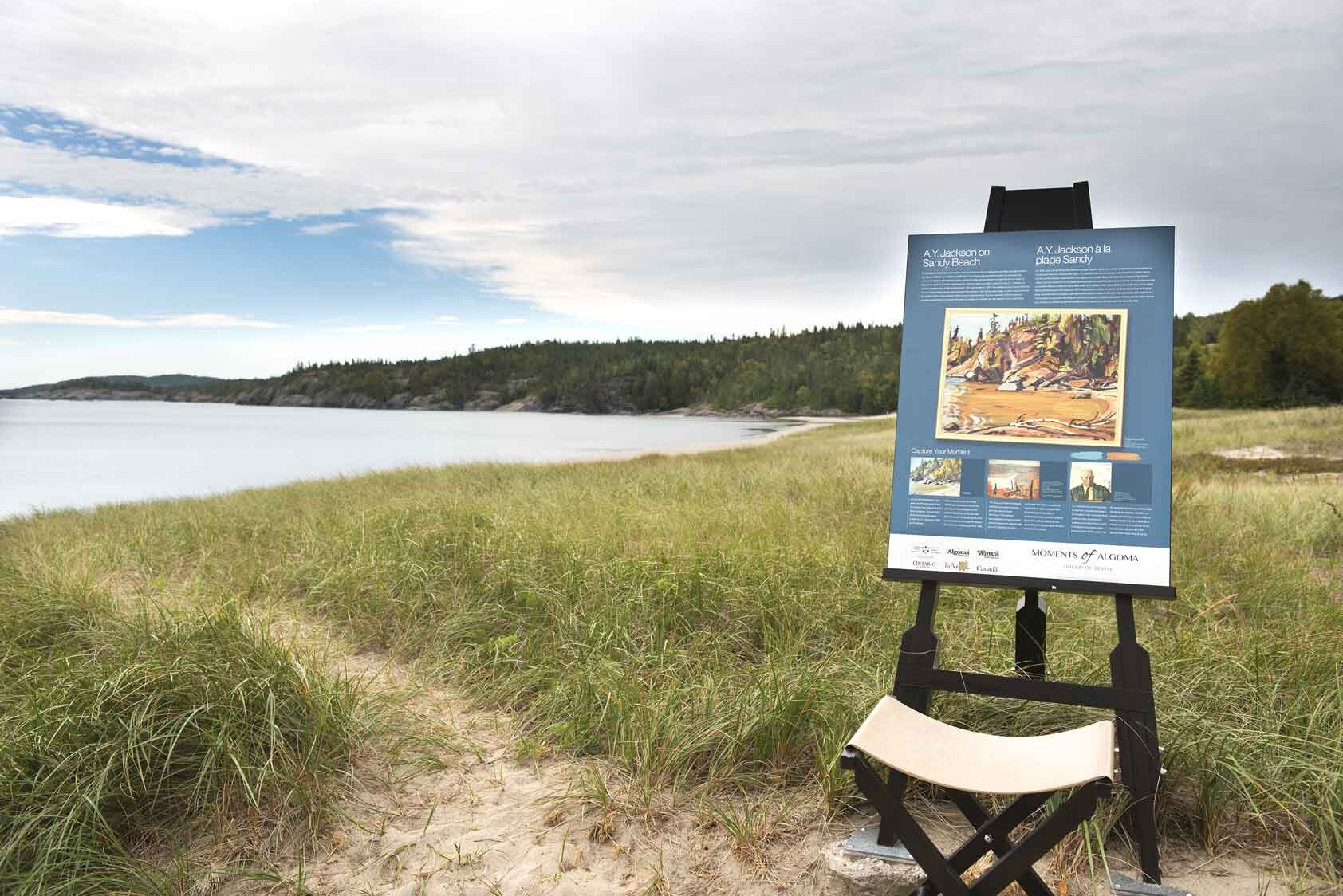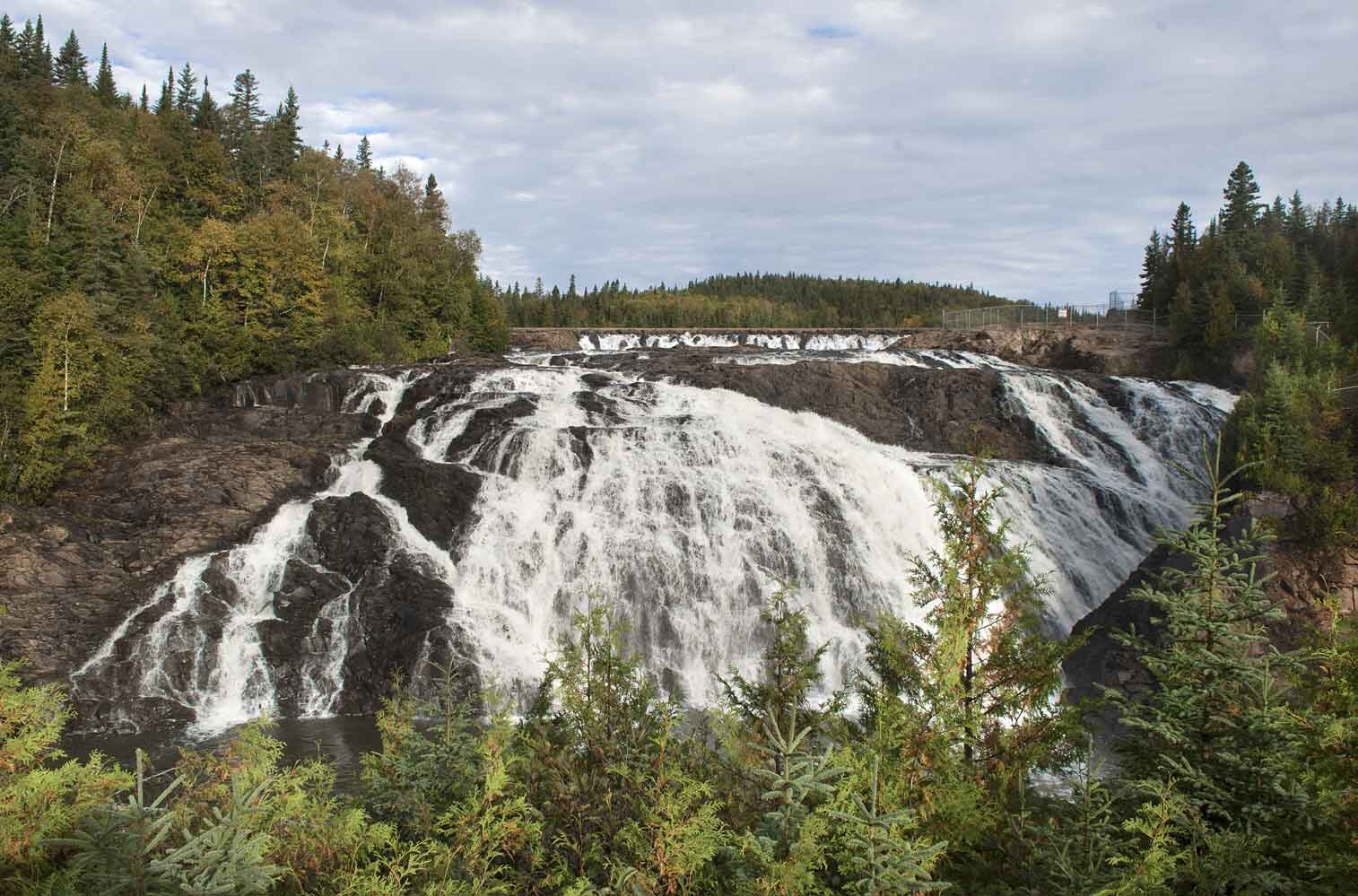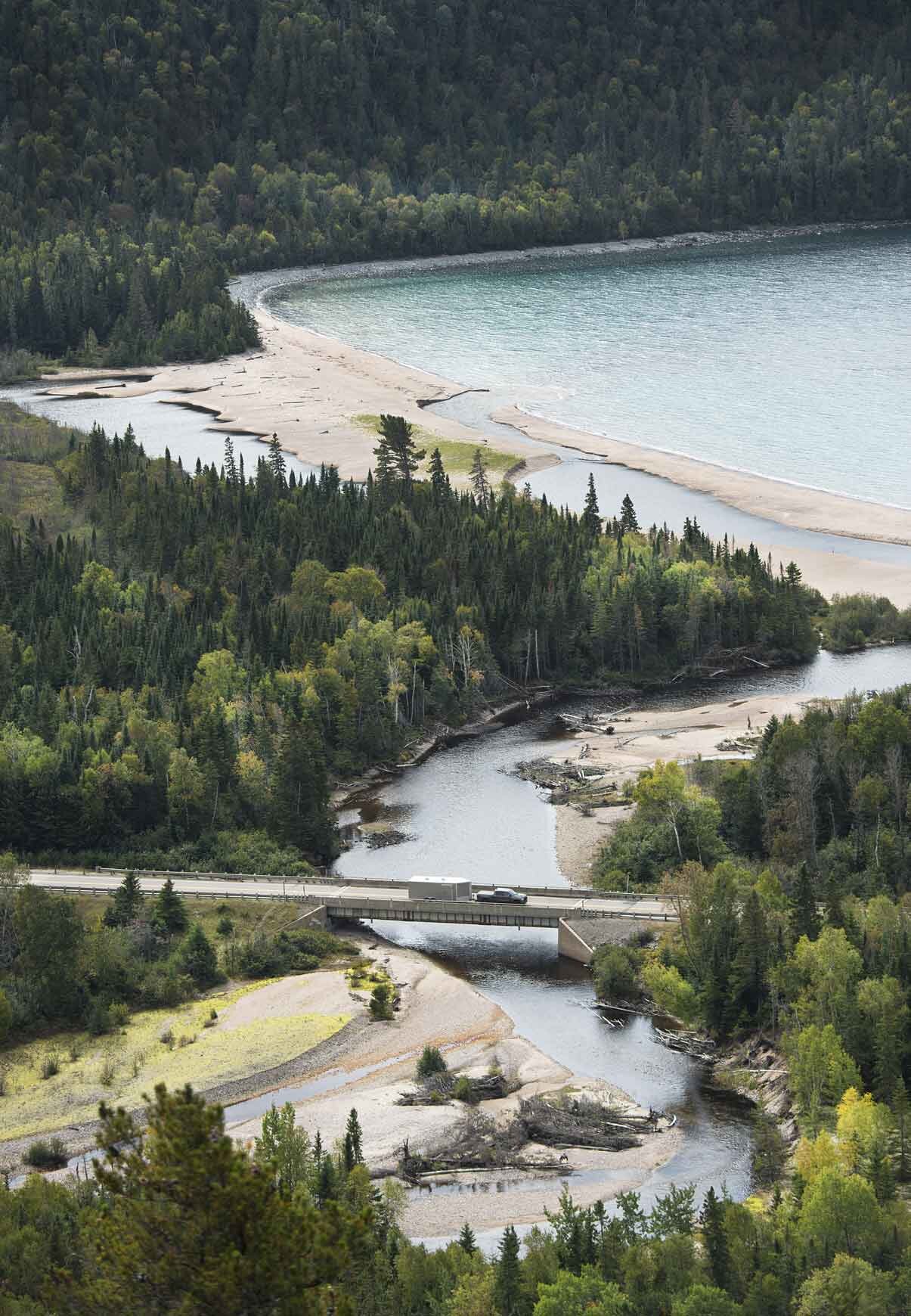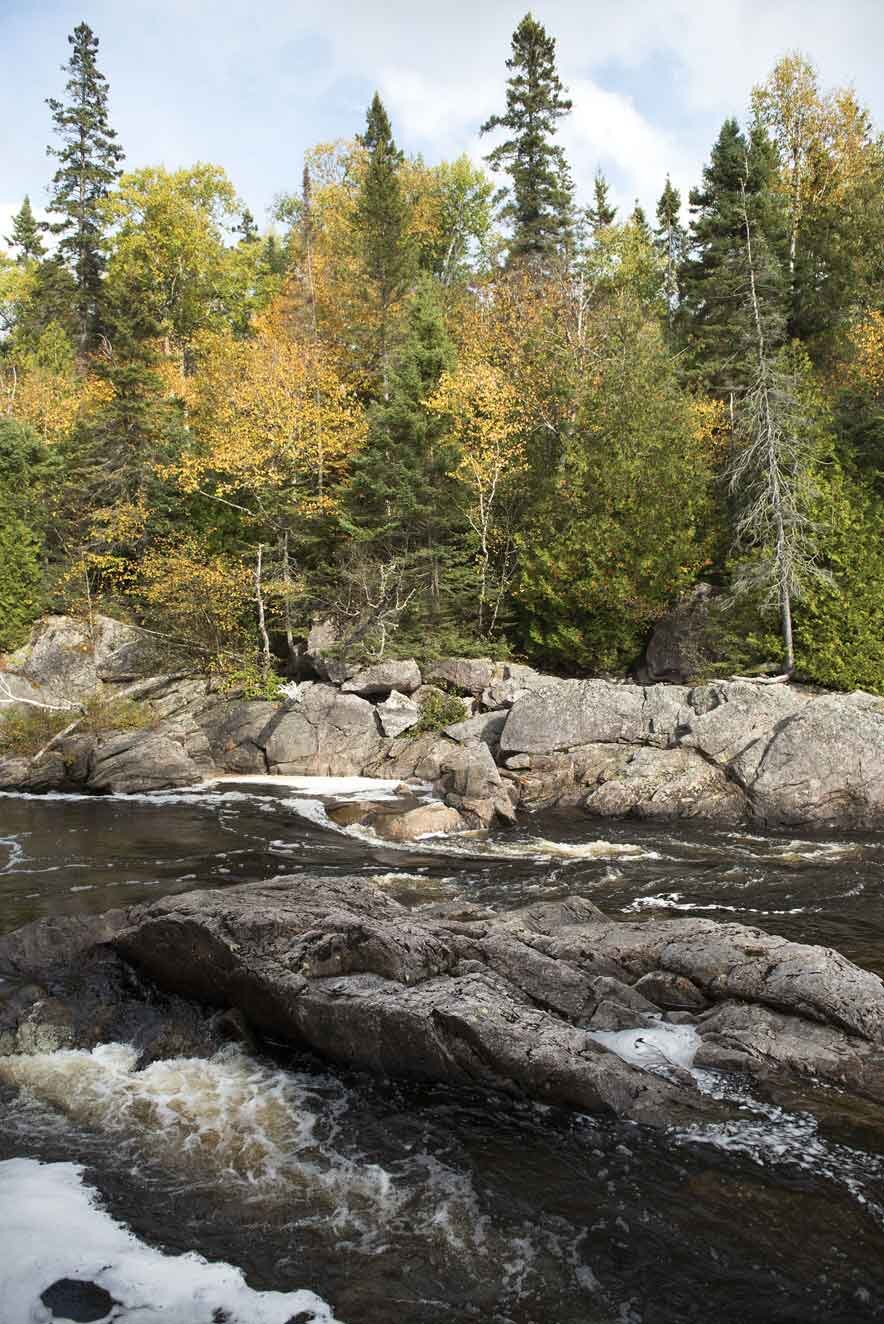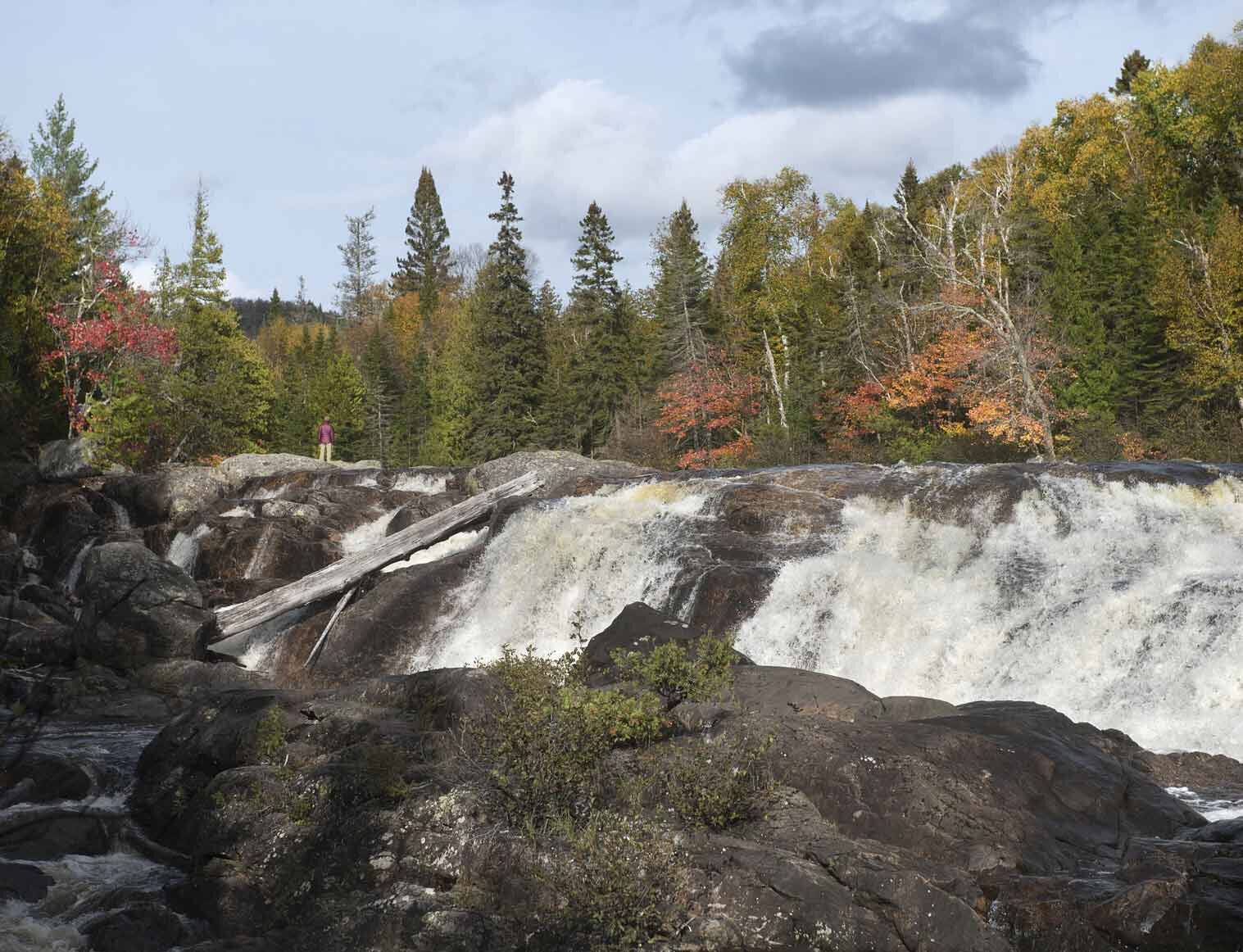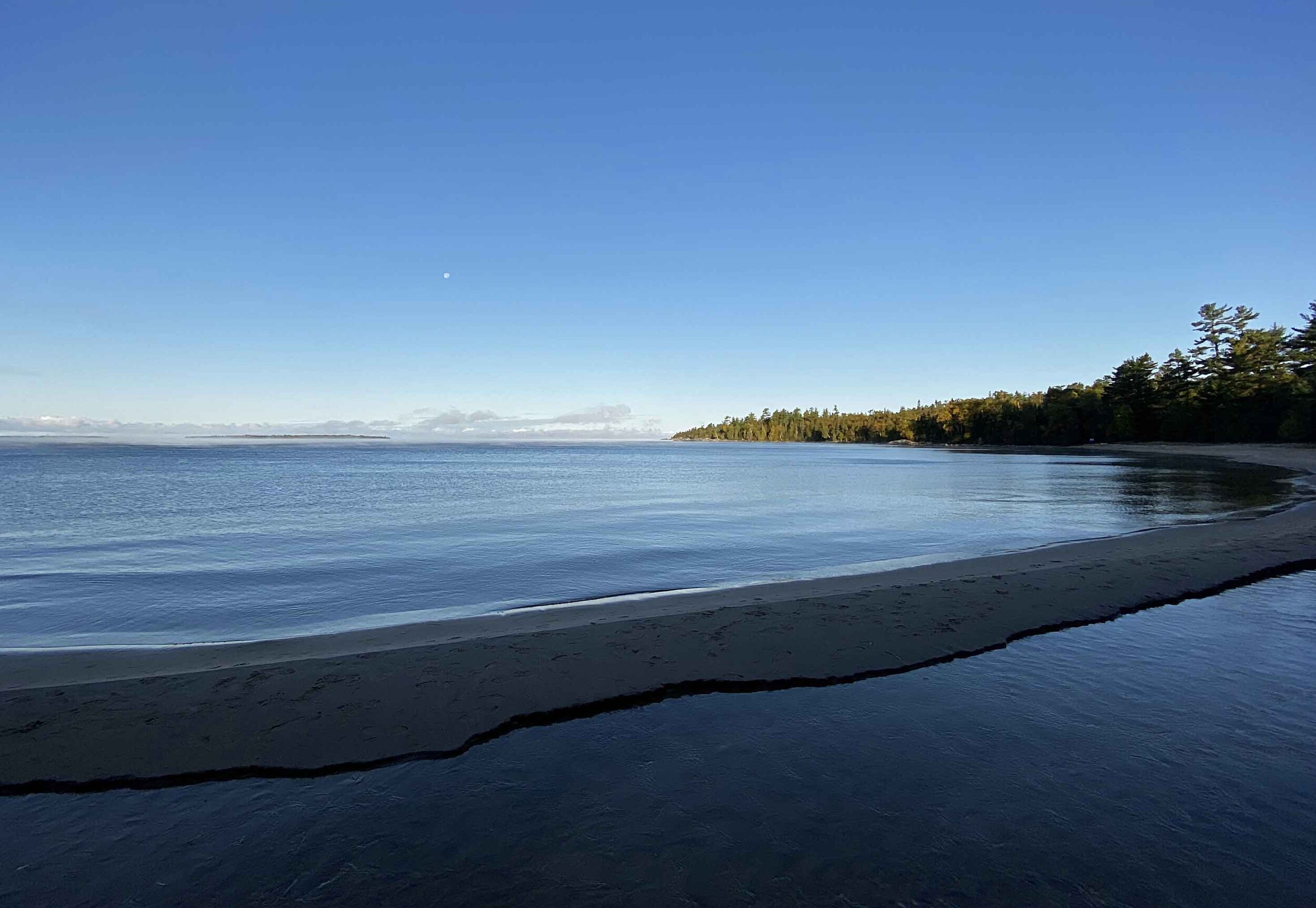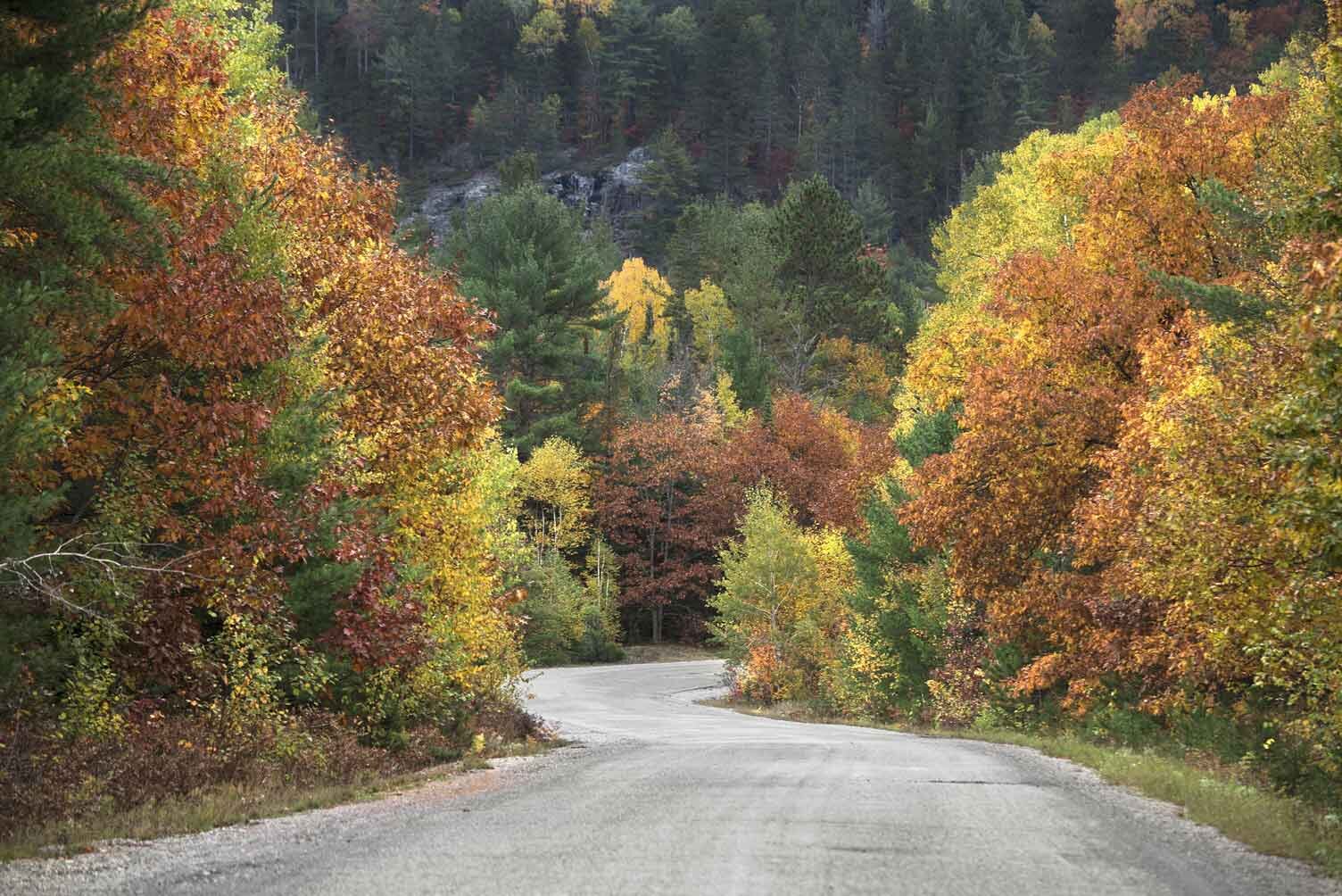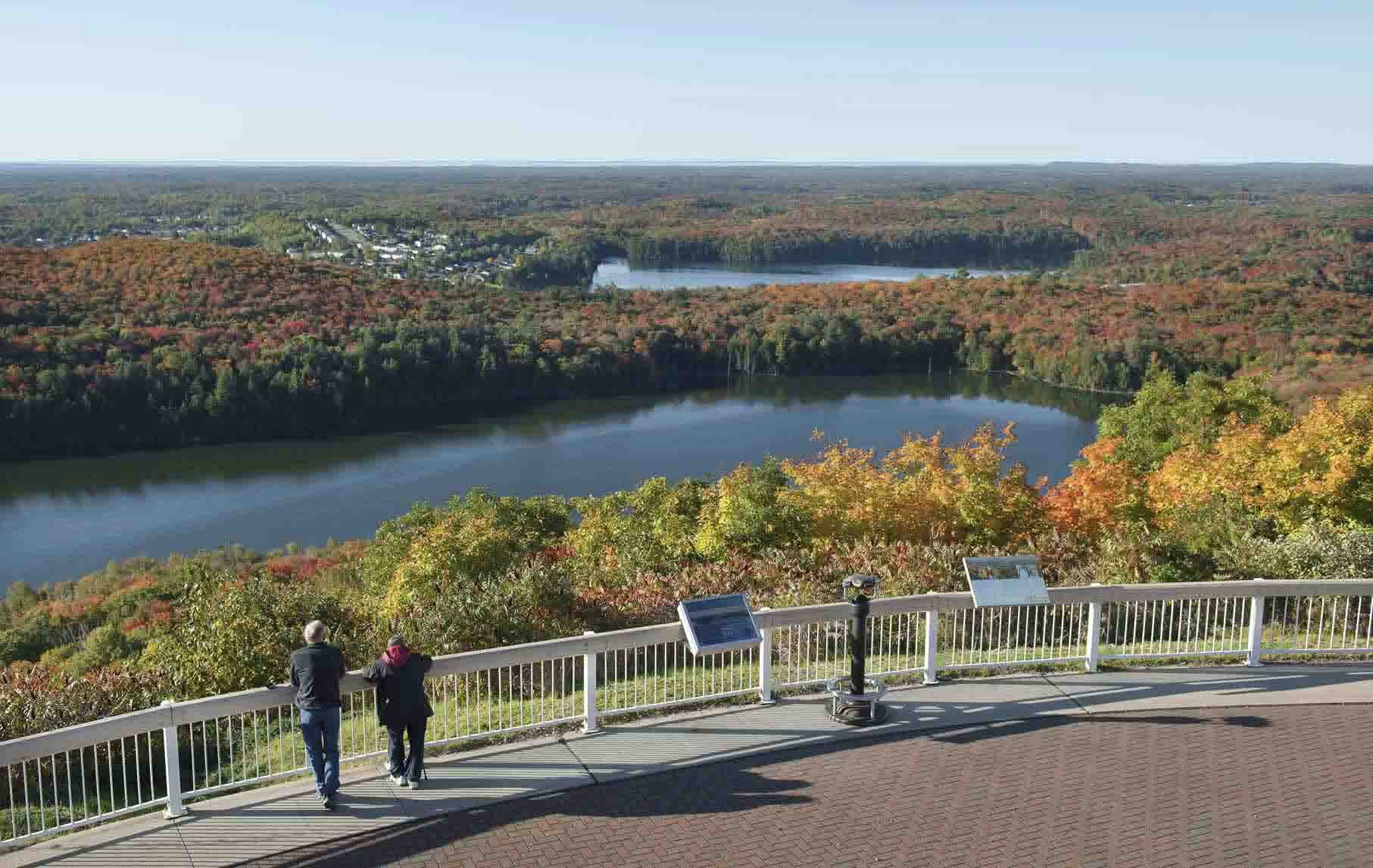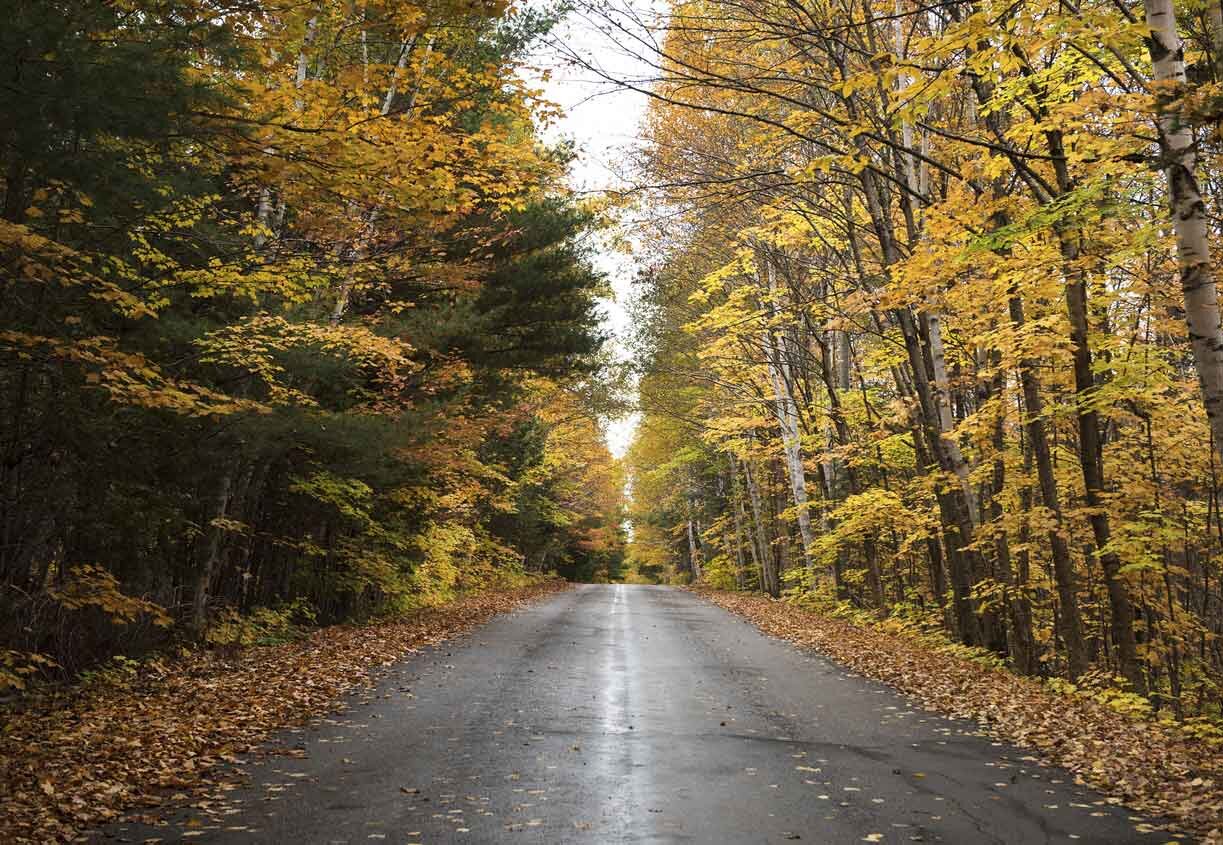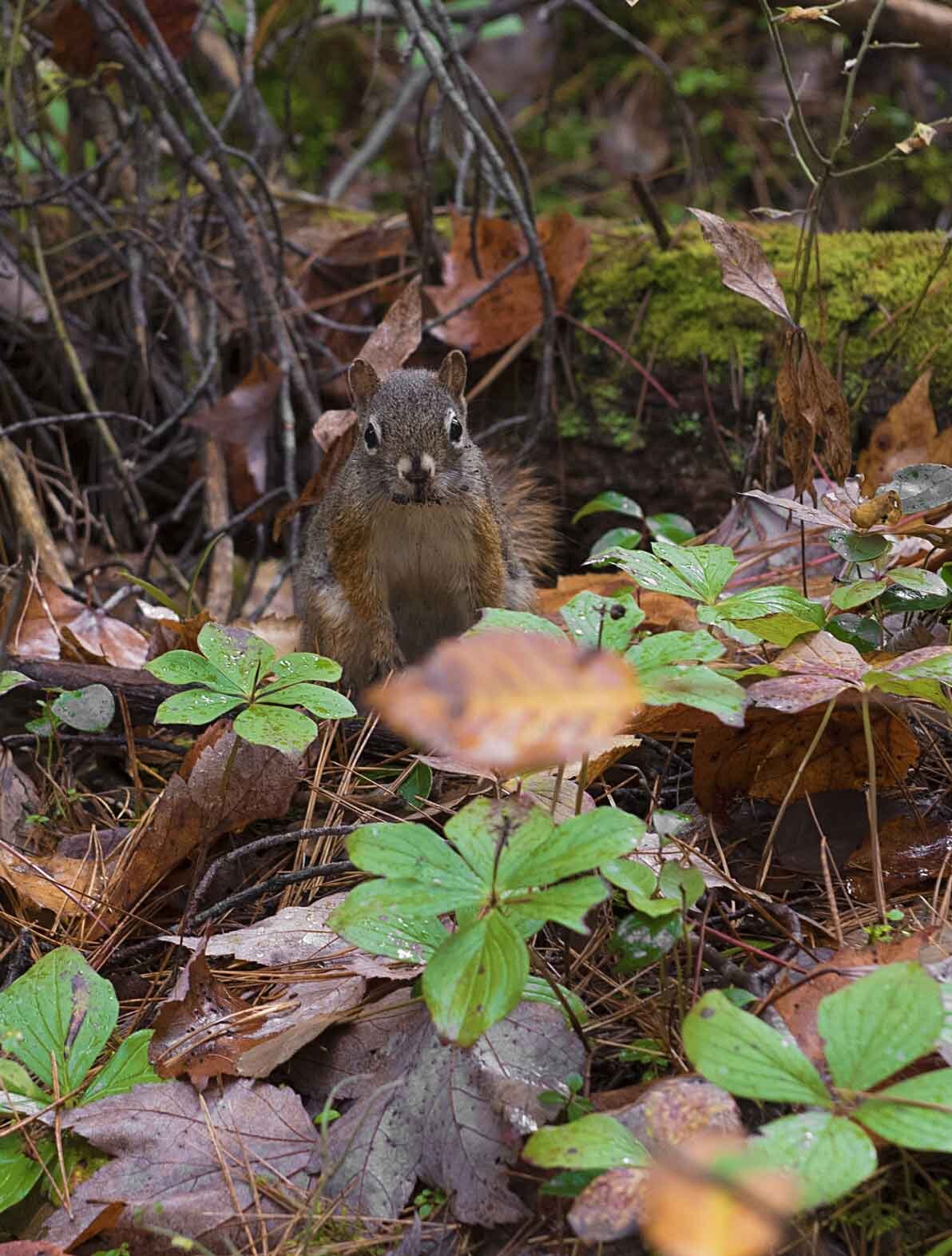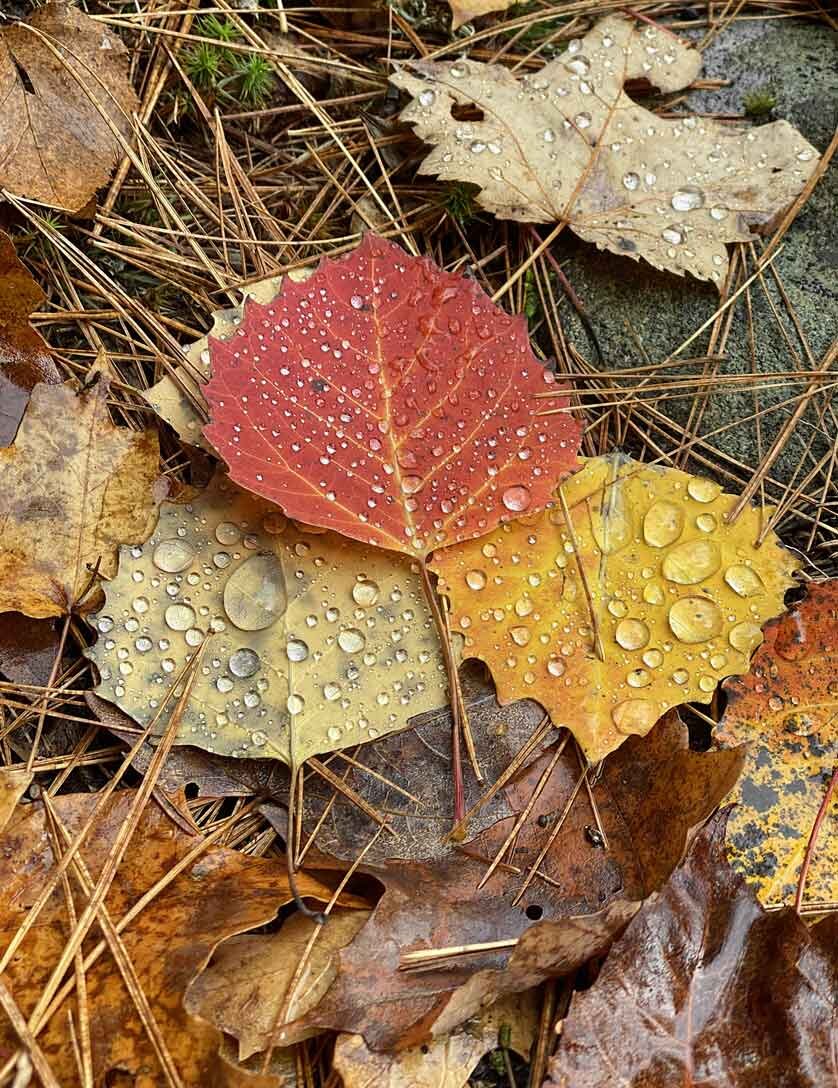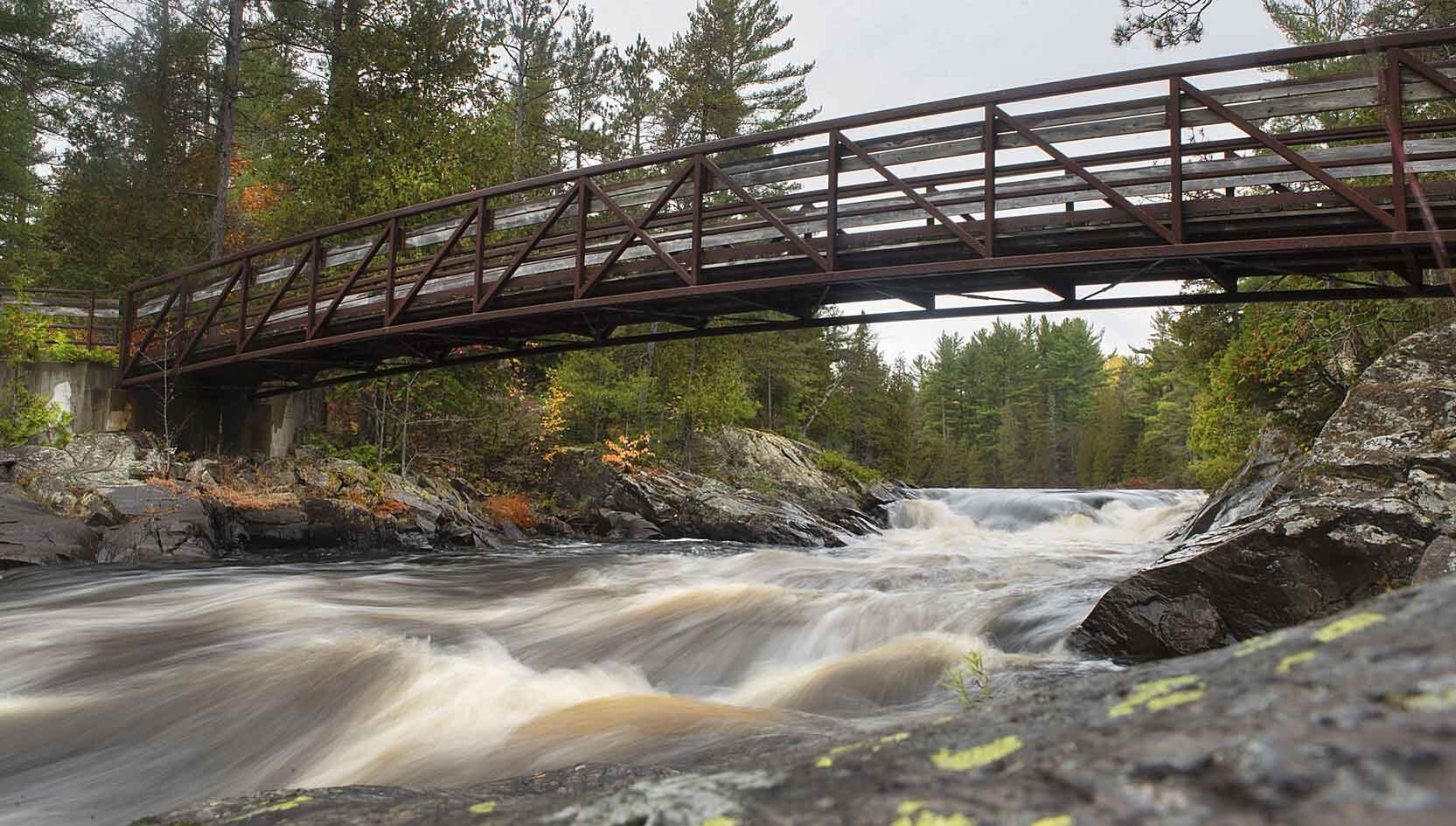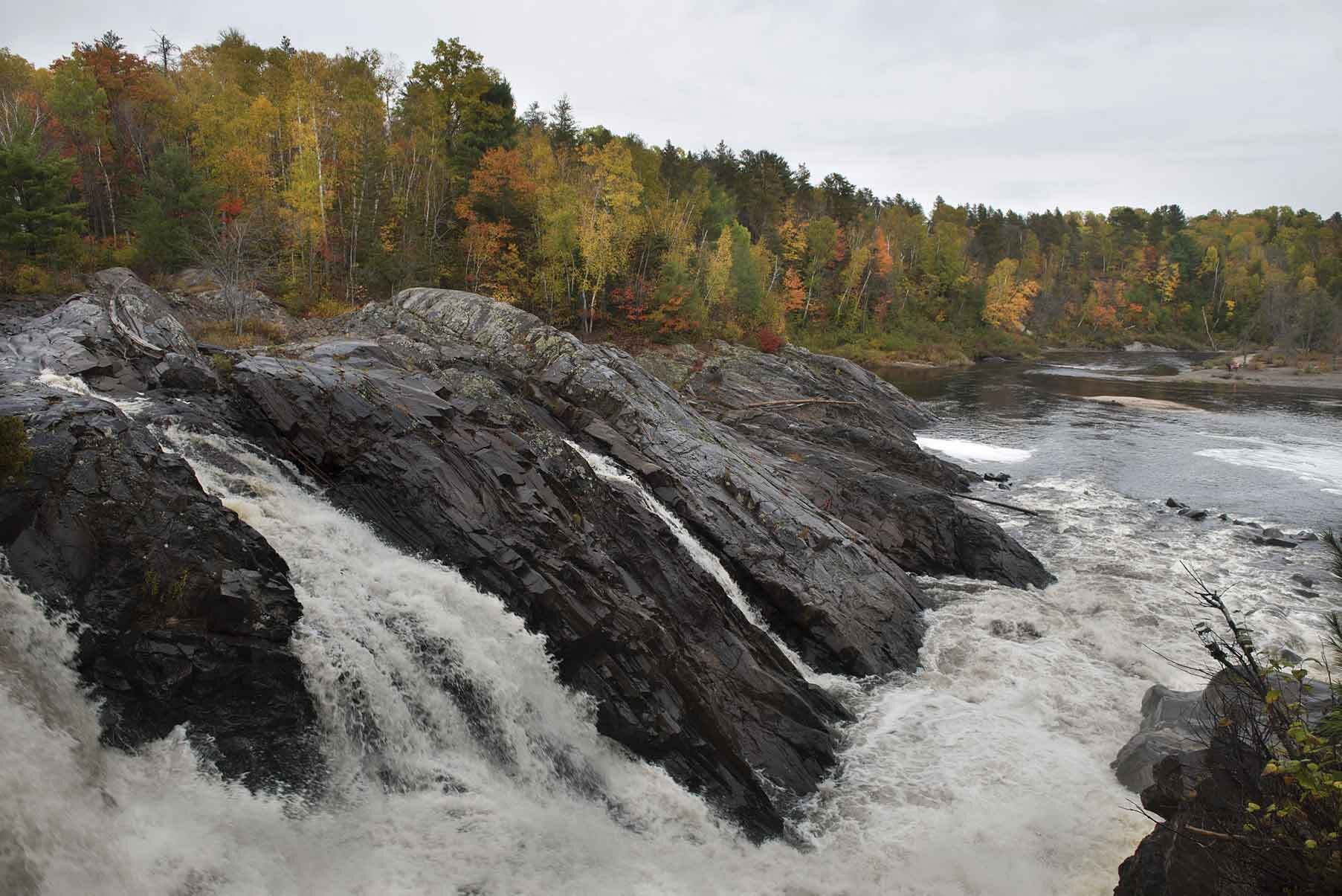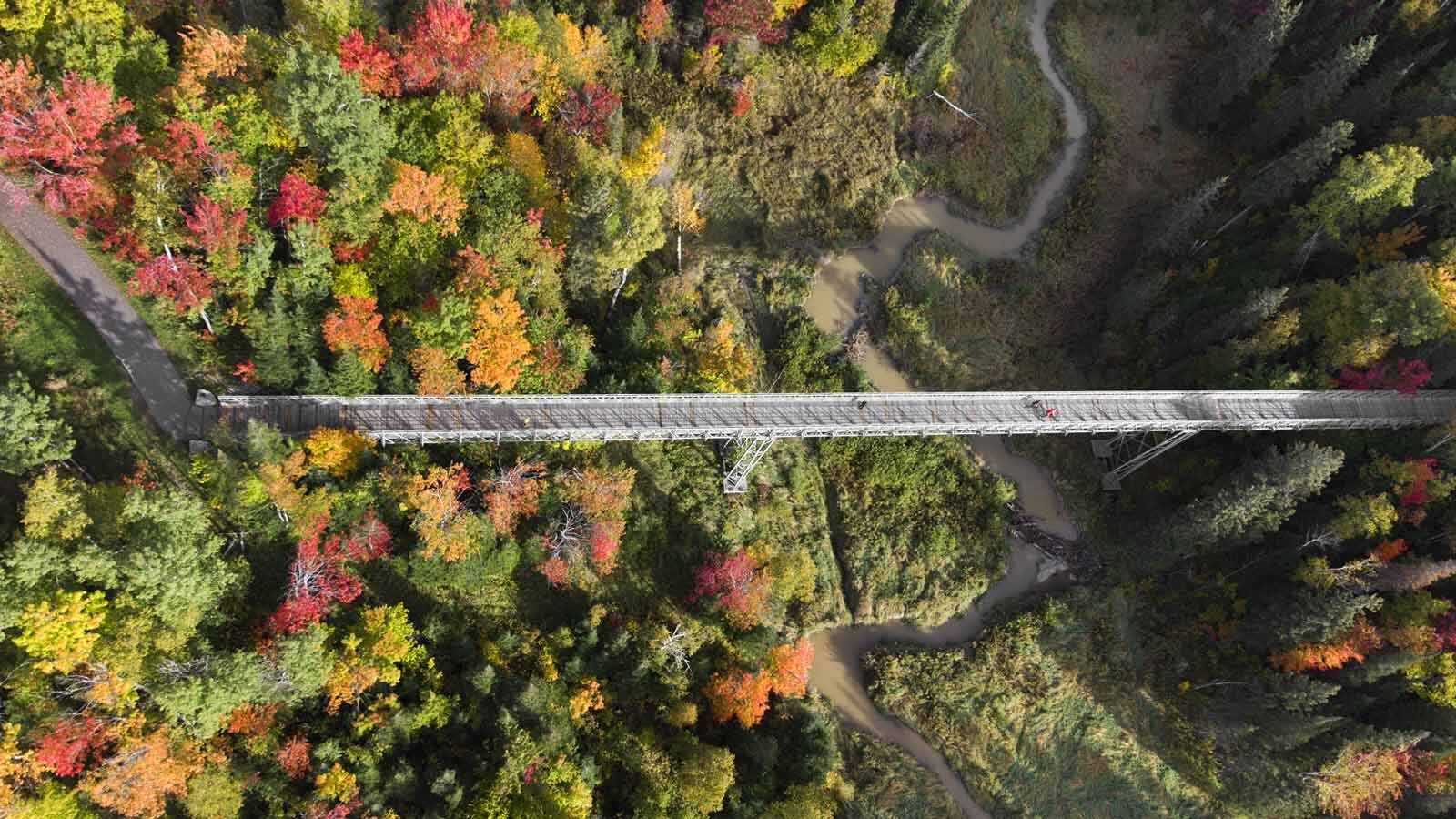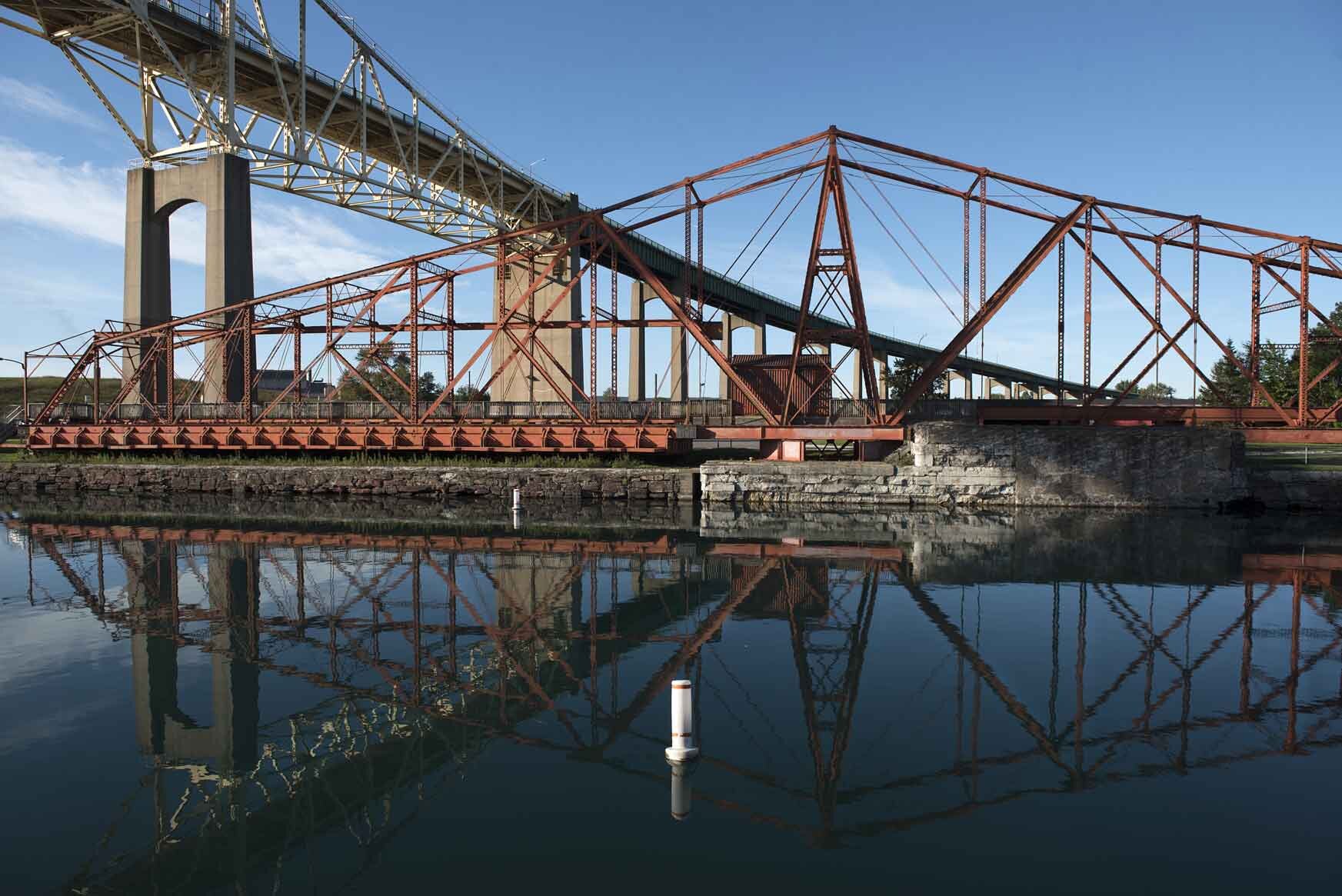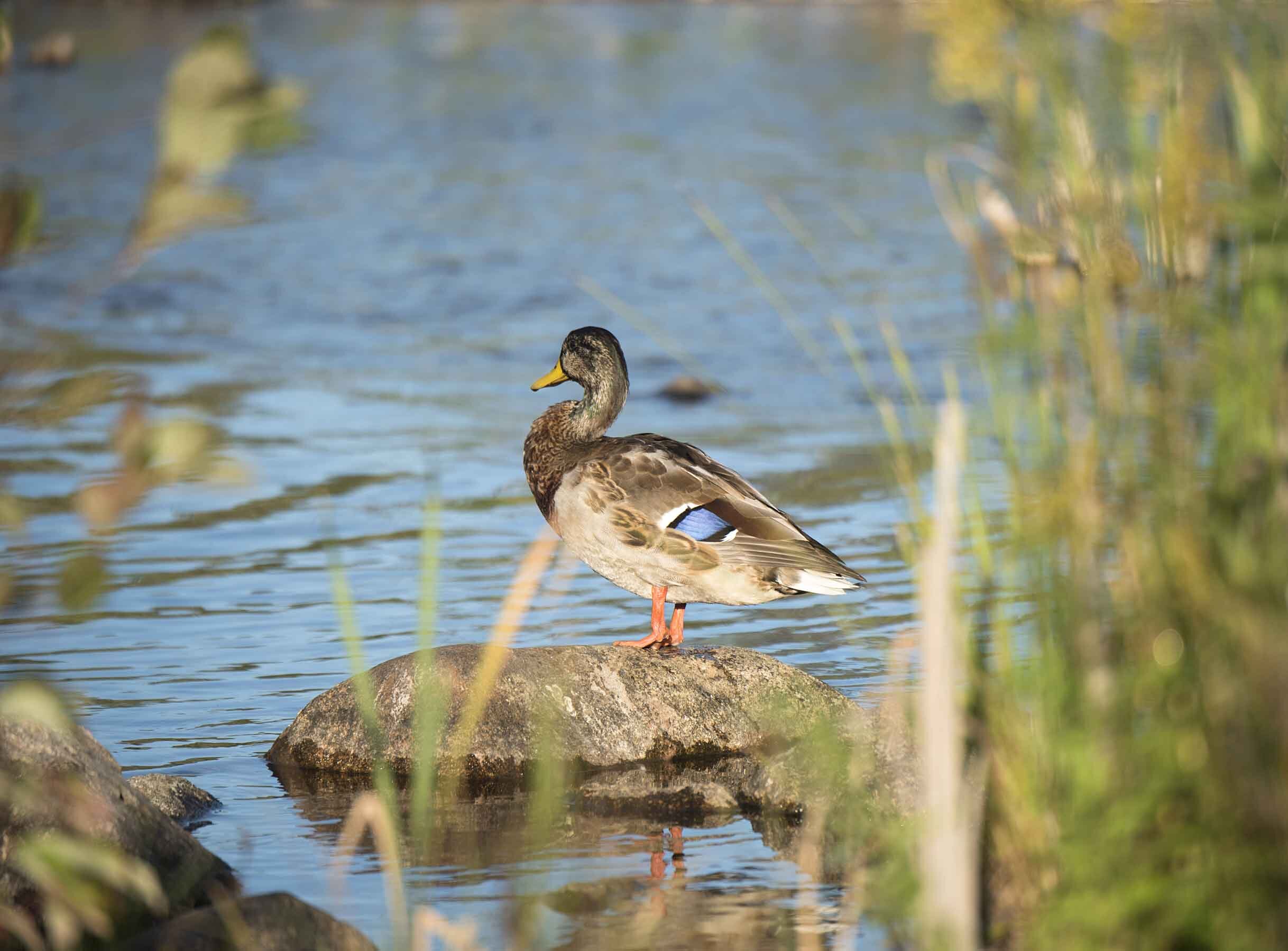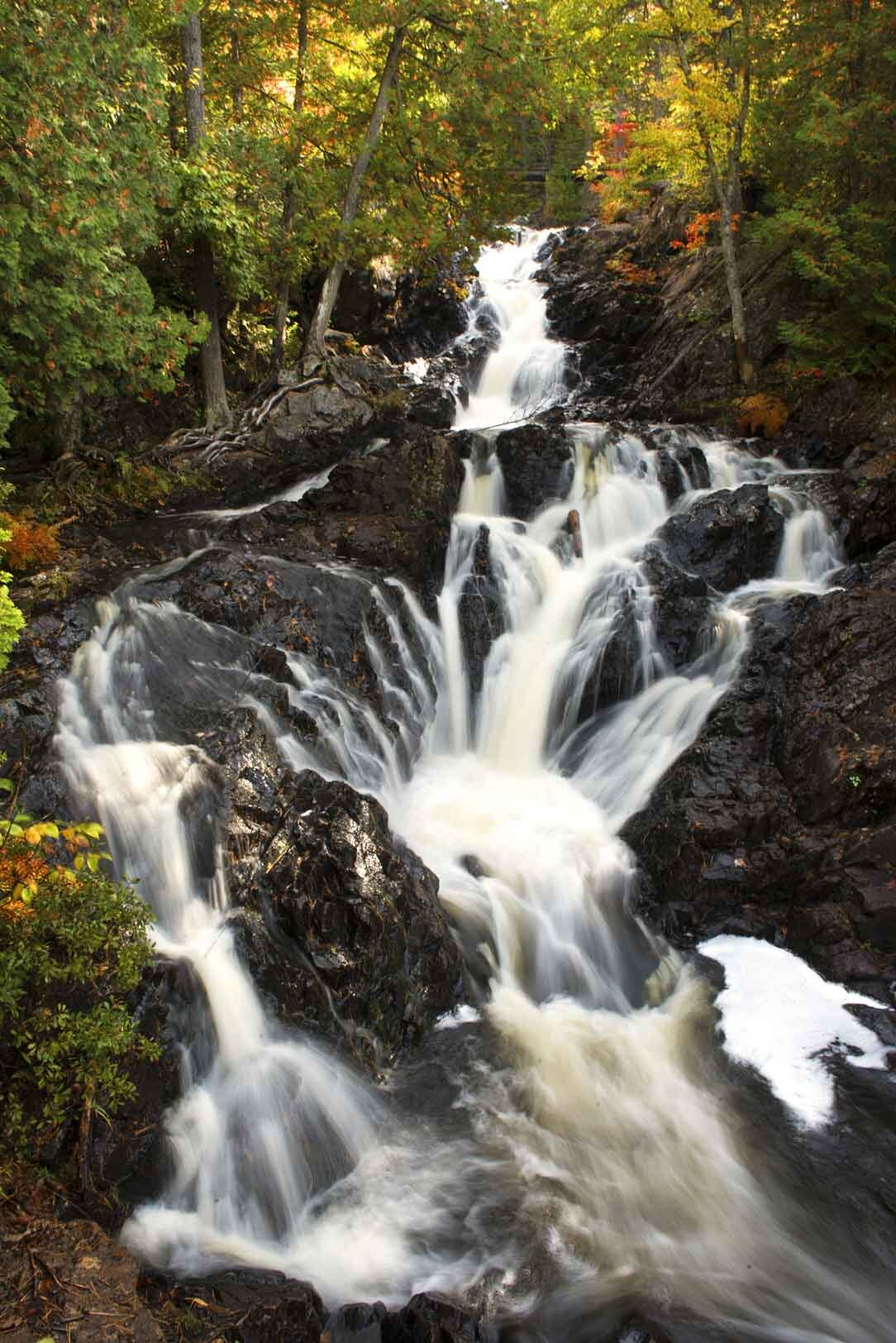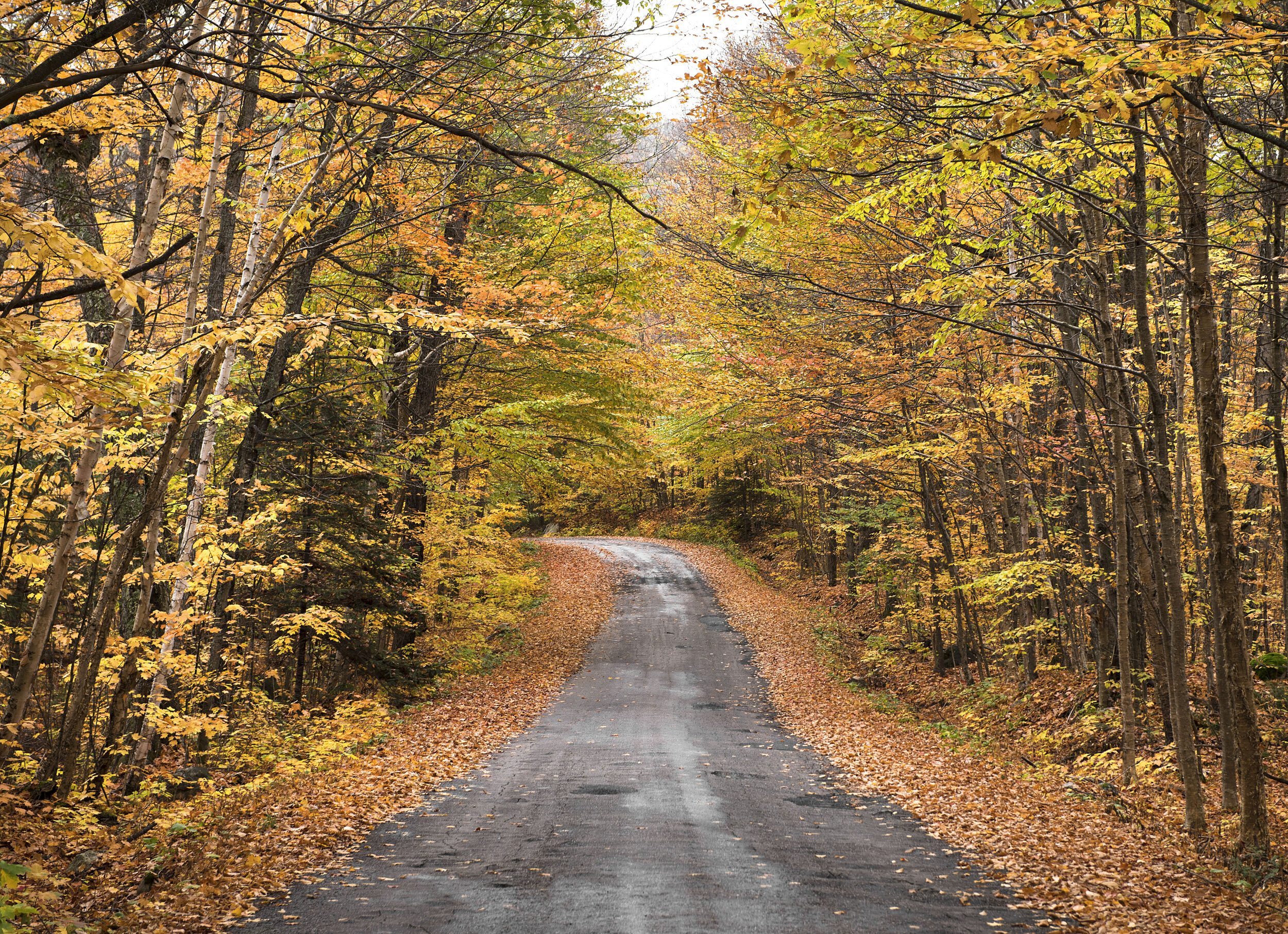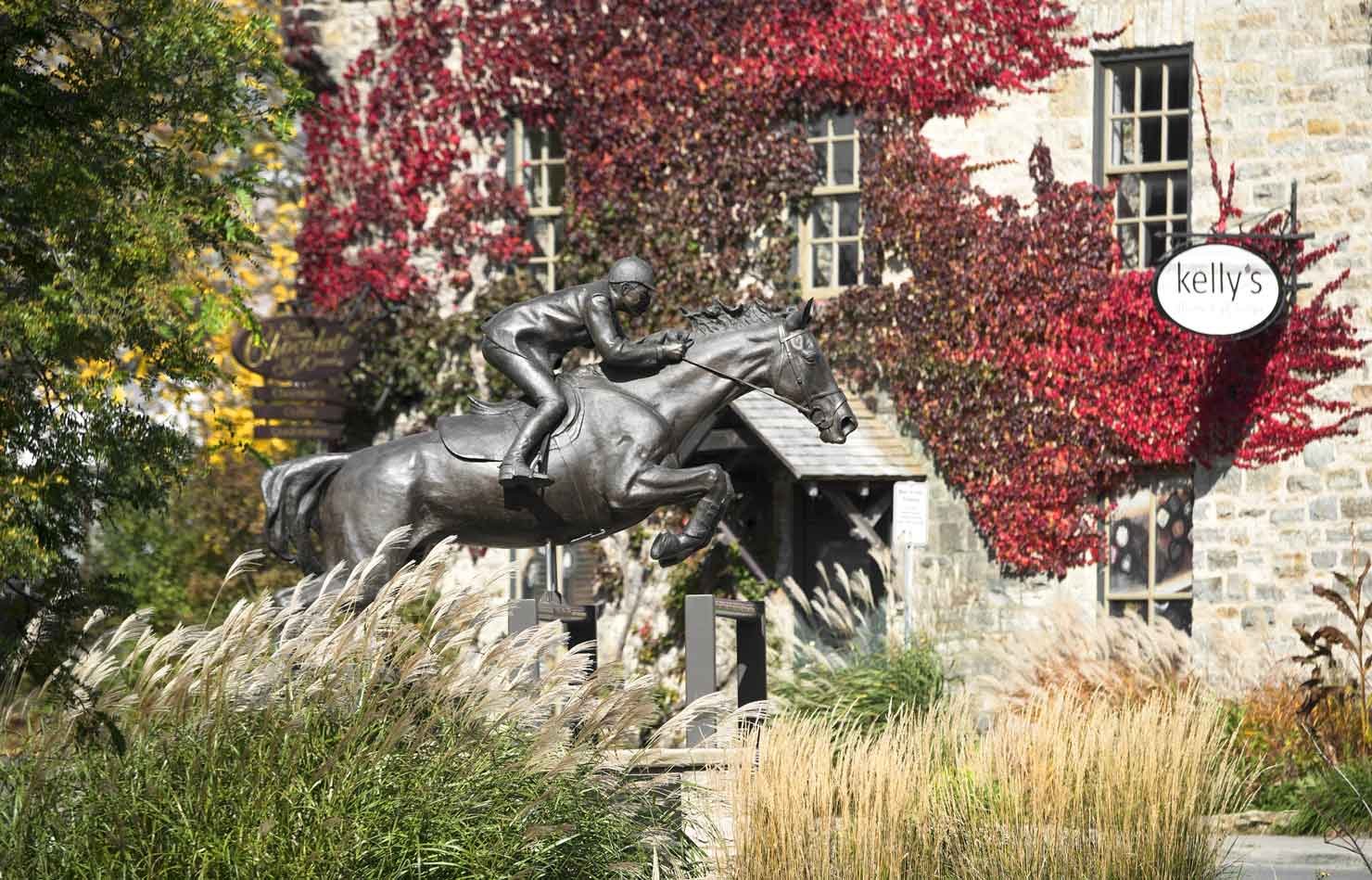Exploring Ontario’s Algoma Country in the Fall; Best Things to see and do
Fall is the perfect time to explore Ontario’s north. Algoma Country, located from the north shore of Lake Huron to the top of Lake Superior, is a region full of amazing outdoor experiences, and the best place to revel in the beauty of the autumn season. From breathtaking lookouts and epic hikes, to scenic drives and a one-of-a kind train tour into a secluded canyon, Algoma Country is the place to go for outdoor fall adventure!
Hike to the top of the Robertson Cliffs
If you’re looking for the best place to view the fall colours, a hike up the Robertson Cliffs just north of Sault Ste Marie is a must! This looped 4.3km trail leads you 205m up to the top of the Roberson Cliffs, part of the Algoma Highlands Conservancy, to a breathtaking view over the Goulais region’s spectacular fall colours. There are 3 different lookout points from the top, all with amazing views down to the multicoloured canopy below, and on a clear day you can even see Lake Superior to the west! The trail’s uphill ascent is steep, but the views from the top are more than worth it.
To get to the top follow Ila’s Trail (named after the avid hiker who developed the trail herself), which leads you through mature boreal forest and even a waterfall. Alternatively, you can follow the trail to the lookout points and turn back if you’re running short on time. To get to the trail head, head east off the Trans-Canada Highway onto old Highway 17 Rd, then onto Robertson Lake Rd. Parking for the trail will be on your right about 5km down the road.
Tip: If you’re looking to skip the scenic route and head straight to the top, park at the base of the Below the Cliffs Trail, and you’ll find a connecting trail into the forest about 20m east of the wayfinding sign which will lead you up to the Robertson Cliffs Trail. Note this shortcut involves a very steep constant uphill climb, so be ready!
Enjoy fall views on the Agawa Canyon Train Tour
As one of the most iconic train tours in North America, the Agawa Canyon Train Tour is a one-of-a-kind adventure. This 1-day excursion leads you 114 miles north of Sault Ste Marie into the stunning Agawa Canyon. As the canyon is only accessible by train, this makes it an exclusive experience for those lucky enough to secure a spot aboard. As you sit glued to your window, you’ll be dazzled by beautiful, secluded lakes, giant rock formations, distant views of Lake Superior and endless landscapes of stunning fall colours. GPS-triggered commentaries along the way give you an insight into the history of the region and point out some notable landmarks along the way.
On the journey the train passes over several trestle bridges, the most notable being the Montreal River Trestle which makes a dramatic turn allowing you to see the curve of the train ahead and behind you. The train slows as it crosses the trestle allowing for some amazing photo-ops. At mile 102, the train makes the 500ft descent to the floor of the Agawa Canyon. Keep your eyes peeled to the right as the tracks follows the Agawa River, for a great view of Bridal Veil Falls.
When you arrive at mile 114 you’ll be treated to spectacular views of the 1.2 billion year old canyon, and you’ll have 90min to explore Canyon Park. There are several trails to choose from including the Lookout Trail, which leads you up 250ft above the canyon floor via 300 stairs to a jaw-dropping lookout over the park below. There are also two waterfalls that can be accessed via the Talus Trail including the stunning Bridal Veil Falls which was famously painted by the Group of Seven. For those looking to relax and enjoy the surroundings, a picnic area nearby offers the perfect place for a peaceful lunch in an extraordinary setting.
The history of the Agawa Canyon and the Group of Seven dates back to 1918 when several members of the iconic Canadian painting group headed into the region to capture its beauty on canvas. They rented a boxcar from the Algoma Central railway, and outfitted it as a cabin, studio and living space. Lawren Harris and J.E.H. MacDonald were the two artists among the group who used the railway the most to reach painting locations in the heart of the region, and their artwork “Waterfall, Algoma” (Harris) and “Algoma Waterfall” (J.E.H. MacDonald) can be seen as part of the “Moments of Algoma” series of interpretative displays within the park.
Tips: While you only have 90min in the park, it is possible to do the Lookout Trail and the Talus Trail to Bridal Veil Falls; just be prepared to disembark quickly. The front of the train will put you close to the start of the Lookout Trail, while passengers at the back will be closer to Bridal Veil Falls. For the best views choose the right side of the train leaving Sault Ste Marie. Note that the train does not turn around (so you’ll have the same view there and back).
Hike to the Edmund Fitzgerald Lookout in Pancake Bay Provincial Park
Some of the most extraordinary fall views in Algoma Country can be found from the top of the Lookout Trail in Pancake Bay Provincial Park. Hike the 7km return trail under a colourful canopy to the top of the Edmund Fitzgerald lookout and enjoy panoramic views of Lake Superior and see aptly named Pancake Bay. From the top of the lookout you can see across to Whitefish Point, and take in the views of what is known as the “graveyard of the Great Lakes” where the Edmund Fitzgerald sank in 1975.
Explore Hidden Gems in Wawa, Ontario
While known for it’s iconic giant Canada goose, the town of Wawa has some secret hidden gems that are worth a detour off the highway.
After taking the necessary goose selfie at the Wawa Visitor Information Centre, head into town to check out Wawa Lake and the Lion’s Beach Heritage walk. Take in the views with the fall colours reflecting on the calm waters, and be sure to stop by Mine Driller Memorial which pays homage to the over 100 years of mining history in the region. The beachfront also provides a great spot to watch the sunrise with a cup of coffee or have a midday picnic in the autumn sun.
If you’re looking for a fall paddling experience, then head to Naturally Superior Adventures located on the rugged shore of Lake Superior at the mouth of the Michipicoten River, just minutes from downtown Wawa. This local outfitter specializes in on-the-water experiences, for beginners to seasoned pros. From introductory sea kayaking instruction and multi-day trips for experienced paddlers on Lake Superior, to SUP lessons and canoeing on the tranquil Michipicoten River, there’s something for everyone. They even have a giant Voyageur canoe if you have enough friends! Owner Dave has run Naturally Superior Adventures and the cozy 4-room Rock Island Lodge for close to 30 years. His love for paddling and Lake Superior is infectious, and the hospitality at the lodge makes you feel like you’re staying with family.
Just down the road from Rock Island Lodge, on the territory of the Michipicoten First Nation you’ll find stunning Sandy Beach. This long white sandy beach is accessed via a short boardwalk surrounded by rolling sand dunes and opens onto a beautiful isolated and peaceful beach, framed at both sides with rugged Canadian Shield. The Group of Seven’s A.Y. Jackson painted this beach in his piece, “Shoreline, Wawa, Lake Superior”, and you’ll no doubt see why he chose this breathtaking location as inspiration for his art.
Only minutes away from Sandy Beach is one of Wawa’s unique hidden gems, the Scenic High Falls. This lovely isolated 23 m high and 38 m wide waterfall is easily accessible from the Trans-Canada Highway and showcases a wide dramatic flow from the Magpie River. This waterfall is absolutely stunning, and since it’s off the beaten track the odds are high that you’ll have the place to yourself. Stop for cool fall photo op or enjoy a lunch at the small picnic area with a falls view.
Hit the Trails in Lake Superior Provincial Park
One of the crown jewels of Algoma Country is the breathtaking Lake Superior Provincial Park. As you drive through the rugged terrain and spectacular mountainous landscape into the park, you’ll feel like you’re in another world.
Hiking is the best way to discover the park and there are several trails which will provide you with impressive views over the changing fall landscape. One of the most scenic lookout points is from the top of the Nokomis Trail. This trail is accessed across the highway from Old Woman Bay and is a 5km looped trail which brings you 200 m up above Lake Superior for unparalleled views of Old Woman Bay. This hike has been named one of the best in the country by Lonely Planet’s “Discover Canada” guidebook, and should definitely be on your must-do list while in Lake Superior Provincial Park.
If waterfalls are your thing, you’ll want to stop by the Pinguisibi (Sand River) Trail. Pinguisibi is the Ojibwa name for “river of fine white sand” and this easy 6km linear trail provides some amazing opportunities to get up close to a series of beautiful waterfalls and rapids. This river is an ancient travel route used by the Ojibwa as they hunted, fished and trapped in the interior of the park, and you’ll find the trail and waterfalls especially beautiful highlighted with pops of autumn colour.
One of the most important sites in Lake Superior Provincial Park can be found at the end of the Agawa Pictographs Trail. Generations of Ojibwa recorded their dreams and spirits in red ochre paintings at this sacred site and the pictographs can be seen on the rock face at the edge of Lake Superior to this day. The pictographs site is accessed via a short 0.5 km picturesque loop passing through rock chasms and large fallen boulders. To view the pictographs, hikers can walk on a rock ledge (only during calm conditions). Depending on the water level and wave conditions, the rock ledge is not for the faint of heart. The rock ledge’s slope can be unnerving and the rocks slippery, especially when wet. The trail usually closes mid September for safety reasons due to unpredictable weather conditions on Lake Superior, but if you’re in the park during that time it’s definitely worth the visit.
There are also some must-stop locations right off the Trans-Canada Highway in Lake Superior Provincial Park with iconic views right out of a Group of Seven painting. Katherine Cove is a beautiful white sand beach surrounded by crystal clear waters and rolling Canadian Shield. It’s a great spot for a picnic or a quick hike along the rocky shoreline for views from the Coastal Trail. Old Woman Bay is also a quick pull off the highway and it’s long white sandy beach with majestic cliffs towering overhead make it a truly breathtaking spot. Look close enough and you may be able to stop an old woman’s face in the cliff face.
Explore Nature in Elliot Lake
Some of the most stunning fall colours can be found in the Elliot Lake region of Algoma Country. The colours in this region are incredibly vibrant, from neon oranges, bright yellows and deep reds so scarlet they almost appear purple.
One of the best ways to experience the fall colours is to take a scenic drive on the Deer Trail Touring Route. This paved (yet slightly rugged) 120km road twists and turns through river valleys, and colourful mountain passes, as you wind your way through kilometers of pristine wilderness. There are a couple of unmarked pull-offs midway through the route which allow you to stop for photos, but the drive itself is the highlight.
For spectacular panoramic views of Elliot Lake and the surrounding countryside, the Fire Tower Lookout in Elliot Lake is a must. From the top of the lookout, with it’s two-tiered lookout tower, you can marvel at the colourful canopy hugging emerald green lakes, and the interpretive signage helps you identify key locations seen from the top. It’s a great place at any time of day, but sunset and sunrise are especially special. The Fire Tower lookout is easily accessible by car with a small parking lot just steps away from the lookout tower, and a small playground nearby is great for families with kids. There are several trails leading from the lookout as part of the Coureurs de Bois trail which is an 89km wilderness recreational trail that is part of the Voyageur Trail (Trans-Canada Trail) system. The Lungbuster Trail, Fire Tower Trail and Westner Trail loop is a good option to stretch your legs and explore the area beyond the lookout tower.
Located a short drive from the Fire Tower Lookout, wildlife lovers will enjoy the Sherriff Creek Wildlife Hiking Trails. The Sherriff Creek Wildlife Sanctuary is a 182-hectare protected habitat for birds, mammals and reptiles, and features many different plant and animal species that are native to the Elliot Lake area. A walk through the sanctuary will take you past, important wetlands, forests, fields, meadows, a cattail marsh and several waterfowl watching blinds. The fall makes the trails especially beautiful with the forest canopy ablaze with colour.
For those looking for some more challenging hiking, Mississagi Provincial Park is only a short 25min drive north of downtown Elliot Lake. The park is known for it’s spectacular fall colour display, and several challenging hikes will bring you to some epic viewpoints overlooking the multicoloured landscape below. A highlight of any fall visit to Mississagi Provincial park is the Helenbar Lookout trail. This 7 km trail brings you through rugged mountainous landscapes characterized by giant boulders, to an amazing lookout point over Helenbar Lake. There are also several shorter trails like the 0.8km Flack Lake nature trail and the 1.2 km Semiwite Creek trail which will allow you to enjoy a leisurely stroll through the fall colours. Paddling is also a great way to explore fall colours in the park with several beautiful lakes with short portages to explore. Bring your own canoe or kayak, or rent a canoe directly at the park.
Go Waterfall Watching in Chutes Provincial Park
There’s nothing quite like a beautiful fall waterfall, and Chutes Provincial Park in the heart of Algoma Country has plenty of cascades to explore. The 6 km Twin Bridges trail is the best way to maximize your waterfall viewing, with excellent viewpoints over the powerful waterfalls of the Aux Sables River as well as great views of the Seven Sisters Cataracts. The trail passes through different landscapes, and the changing colours both on the trees and on the ground make for an amazing fall hike.
Explore Downtown Sault Ste. Marie
The city of Sault Ste. Marie has some great outdoor spaces to enjoy with some fun urban treks during the fall season. Built in 1895, the Sault Ste. Marie Canal National Historic site is a must-see when visiting the city. Once the world’s longest lock and the first to operate using electricity, it was the last link in the Canadian navigational chain from the Atlantic Ocean to Lake Superior. While visiting the site, cross the locks onto St. Mary’s Island and hike the 2.2 km Attikamek trail. Pass under the International Bridge to the USA, and follow the pathways through quiet woodlands, past the St Marys Rapids and over a scenic boardwalk through abundant wetland, where you can a spot a variety of birds fishing along the shoreline.
For an extended walk, cross over to the trail on Whitefish Island, a National Historic Site of Canada. The island has a rich history of Ojibwa culture as an ancestral fishing station to the Anishinabek of the Great Lakes region for over 2,000 years. Since then, eight successive cultures have occupied the site, culminating in the Ojibwa nation in the Sault Ste. Marie region that exists today.
If you’re looking for some leisurely trails in the city, Hiawatha Highlands is a gem. Well-known for its winter cross-country ski trail, the area has several trails hiking trails, perfect for a casual fall hike. Head along a short boardwalk in Kinsmen Park to the beautiful Crystal Falls and enjoy views of the multi-tiered cascade surrounded by fall foliage. There is also a great sandy beach and picnic area, perfect for a relaxing afternoon in nature.
Another great spot for a fall stroll is the Hub Trail in the Fort Creek Conservation Area. The Hub Trail is a 24km multi-use trail system great for both walking and cycling and is also wheelchair accessible. The trail connects many notable landmarks like the waterfront walkway, Algoma University College and Bellevue Park, and is perfect for families or those looking for an easy walk-in nature. The trees lining the hub trail are primarily deciduous and create a vivid fall canopy beginning in late September.
To find more information, or to plan your trip, visit Algoma Country Tourism.
*Some businesses may be closed or have reduced hours or activities due to covid-19. Please check hours of operation before visiting.
Some activities in the above were provided by Algoma Country Tourism, although all recommendations are our own.



